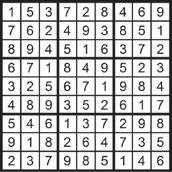HOW THE MR FLUFFY OWNERS WERE SHORTCHANGED
JON STANHOPE & KHALID AHMED defend vulnerable home owners who deserved to be treated with care and compassion.



JON STANHOPE & KHALID AHMED defend vulnerable home owners who deserved to be treated with care and compassion.


ELIZABETH REID and how she helped change Australia.


AUGUST 28, 2025

Labor’s smoke-and-mirrors rorting of our rates
MICHAEL MOORE
Jo’s seriously big solar story disappears in a day
ROBERT MACKLIN
What do Moses and King Canute have in common?
CLIVE WILLIAMS
Spring heralds the return of flowers
JACKIE WARBURTON
Nurse Rach shares the marvels of Medi-Spin, your health reimagined KEEPING UP THE ACT

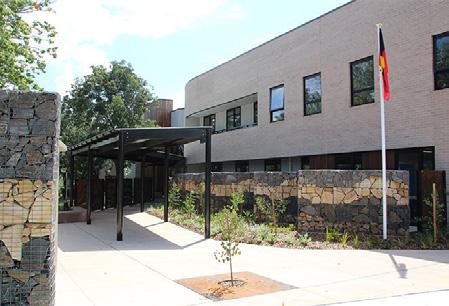


At Tap & Tile, we specialise in transforming bathrooms, ensuites and laundries into beautiful, functional spaces. With over 15 years’ local experience, our team delivers:
• Custom floor & wall tiling tailored to your style
• Designer feature walls & mosaic accents
• Premium tapware & shower fittings
• Underfloor heating & heated towel rails
• Complete wet-area waterproofing
• Full bathroom & laundry renovations Why Canberra Chooses Tap & Tile
• 5-Star Google Reviews from delighted homeowners
• Licensed & Insured tradespeople committed to quality
• Free On-Site Design Consultation, we bring samples to you
• Transparent, Fixed-Price Quotes, no hidden costs





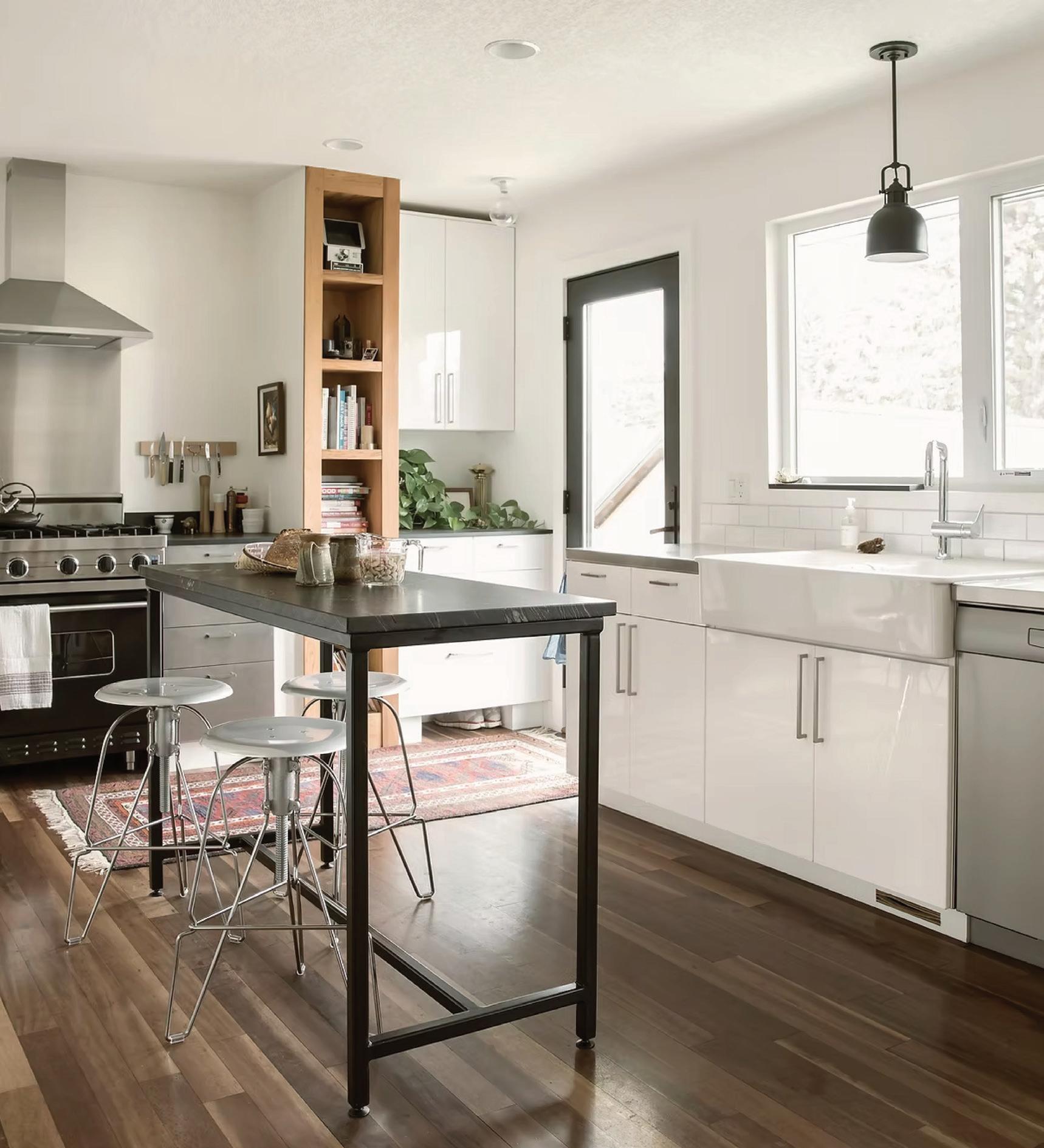
By Elizabeth KOVACS

Jane Austen, born in 1775, in Steventon, Hampshire, England, is known for her six novels penned anonymously “By a Lady” until after her death.
The novels – Sense and Sensibility, Pride and Prejudice, Mansfield Park, Emma, Persuasion and Northanger Abbey – included witty commentaries of middle and upper-class English life from a woman’s perspective.
During her short 41 years, Austen published four books. Upon her death, her brother Henry published her last two books, Persuasion and Northanger Abbey, with a note identifying her as the author.
To this day, Jane Austen’s work has rarely been out of print and continues to be widely read.
Jane Austen Society Australia president, Susannah Fullerton OAM, credits the author’s notability to her ability to make her readers laugh.
“You only need to turn the news on at night to see how depressing the world is in which we live,” she says.
“It’s wonderful if you can turn to a book that invariably makes you laugh when you read it.”
Arts & Entertainment 23-26
Crossword & Sudoku 27
Dining & Wine 26
Gardening 22
Keeping Up the ACT 5
Letters 10-11
News 3-12
Politics 4
Streaming 24

Writing the world’s “greatest love stories”, Susannah reckons Austen’s work is a testament to beautifully written prose.
“In this day and age of emojis and mangled text messages, it’s a real joy to read her beautifully constructed sentences and prose where you never feel that the editor should have gone through and crossed things out with a red pen,” says Susannah.
“Every word is there for a reason.
“She’s concise, elegant and her prose is wonderful, but I think the
In his column of March 27, CLIVE WILLIAMS wrote that his challenge this year was to swim from Türkiye to Greece across the Bosphorus Strait on August 24. He did it! He writes: “I’m pleased to be able to tell you I didn’t drown today, and my finish position was 28 out of 2800 starters. I did the 6.5km in 1 hour and 41 minutes.”
Lord Byron swam the Bosphorus Strait on May 3, 1810, inspired by the legendary story of Leander, who, according to Greek mythology, swam nightly across the strait to meet his lover, Hero. It’s now an annual swim.

Society president Susannah Fullerton… “A life without Jane Austen is a very poor one indeed.”
main reason why I keep going back to her books again and again is because of her incredible understanding of human nature, and that hasn’t changed in more than 200 years since her books were first published.”
Understanding what makes people “tick”, from their motivations to their behaviours, Susannah says it is easy to see some of Austen’s famous characters in the modern world.
“As we read her books, we learn about ourselves, and I think we also learn about other people,” she says.
Since 1993: Volume 31, Number: 35
General manager: Tracey Avery, tracey@citynews.com.au
Advertising account executives: Damien Klemke, 0439 139001
Ashika Nambiar, 0425 149860
Editor: Ian Meikle, editor@citynews.com.au
Journalist: Elizabeth Kovacs, elizabeth@citynews.com.au
Arts editor: Helen Musa, helen@citynews.com.au
Production manager: Janet Ewen
Distribution manager: Penny McCarroll Well written, well read
Graphic designer: Mona Ismail
Commonly thought of as a pivotal role model in the feminist movement, Susannah says Austen’s use of strong heroines and determined women are as important to the modern world as they were to 1813 England.
“Yes, the idea of getting a wedding ring on your finger is no longer vital, but that’s really just a surface thing in Jane Austen,” says Susannah.
“The trick is finding a partner with whom you’re comfortable, compatible and appreciates your strengths and tolerates your weaknesses.
“I think most of us want to find someone who’s going to give us love, understanding and companionship.
“She’s looking at the really important things in life, like how to understand yourself, how to be a member of your community and how to understand people better.”
Susannah’s first foray into Austen’s world was at age 11 with her mother, who would read Pride and Prejudice aloud to her, masking the sound of
rain atop their roof.
“I was still a bit young to appreciate the irony, but I loved the story,” she says.
“I heard my mother stopping to laugh frequently and I’ve been a total addict ever since.”
Although picking a favourite is akin to pulling teeth, Susannah says she has a special place in her heart for Austen’s Emma.
“It’s her absolute masterpiece and to me, it is the perfect novel,” she says.
“I don’t think there’s a single word that could be changed to make it any better.”
An author and literary tour guide herself, Susannah says her life, in many ways, has been shaped by the author’s work.
“A life without Jane Austen is a very poor one indeed,” says Susannah. “She’s timeless.”
Celebrating the author’s 250th birthday, worldwide celebrations are kicking off with many to hit Canberra later this year.
Austen fans will be able to dance the night away at a Regency Ball in the author’s honour at Albert Hall from on November 1, or attend a conference held by the Jane Austen Society at the Rex Hotel from October 31 to November 2.
Ball tickets at trybooking.com/events or conference details at jasa.com.au






A rates bill in the order of $8000 to $10,000 a year for a retiree is devastating. How is this a ‘fairer taxation system’. There is a failure to understand the complexity of wealth versus income,” writes political columnist MICHAEL MOORE.
Have you ever wondered how your rates are calculated? Your rates notice will tell you that the calculation is made on the unimproved value of the land. However, this is only a small part of the story.
The government manipulates the level of rates you pay through a series of other interventions. The most pliable, and significant manipulation, is the “rating factor”. There is no explanation of the calculation of this “rating factor” in your rates notice, no transparency.
The reason behind this is the ACT government’s expenditure has doubled since Andrew Barr first became Treasurer in 2011. They cannot control expenditure, so the rates keep rising.
Independent MLA, Fiona Carrick, exposed the lack of transparency in the rates notices through the government’s failure to identify how much of your rates is spent on interest
payments (CN July 31).
Additionally, the government has also failed to explain, in your rates notice, just how rates are calculated. This is despite a large heading identifying “How your rates are calculated for 2025-26”. No wonder! It is smoke and mirrors.
Consecutive Labor governments have preached that the long-term tax reform process is for a fairer taxation system. The focus is on wealth held in property, as this delivers a more progressive revenue system intended to fall more heavily on those who can afford it.
There is a difference in rates calculations for residential land, residential units, commercial land and rural land. This column will just focus on residential land – although it is a similar story for the other two. The Revenue Office website states there are “two components: a fixed charge and a valuation charge”.
The fixed charge is a very regressive form of taxation as are the levies that together amount to around $1500

“The government failed to explain, in your rates notice, just how rates are calculated.”
Photo: Google Earth
for every ratepayer. This flies in the face of a “fairer taxation system”.
The calculation of the “rating factor’ varies on the value of the property for residential land (as it does for residential units). The land value is multiplied by a variable “rating factor”. This figure changes from 0.2708% of the property valuation for properties valued under $150,000 through to 0.5734% of properties valued over $1,000,000.
Using a smoke-and-mirrors approach, the government changes these percentages with every new



budget. The government simply decides how much money they wish to raise and plays with the range of percentages in the “rating factor” to deliver the financial outcome that suits them. To this they add a fixed charge that this year varies from $406.20 to $4214.75.
The outcome of this process can be seen across a range of suburbs. The government argues there will be an average rate increase of 3.75 per cent. This claim beggars belief when so many suburbs have increases of from 4 per cent to 18 per cent.
Using inner-Canberra as an example, at the high end, Forrest ratepayers face an increase this year of 18 per cent. In Griffith and Yarralumla, the increase is 10 per cent, while Campbell, Braddon and Kingston are looking at an increase of around 7 per cent. Ainslie will increase by 4 per cent and Hackett, Lyons and Mawson by 3 per cent.
In Tuggeranong Gowrie, Monash, Richardson and Theodore increase by 4 per cent. In Wanniassa, Bonython and Conder the increase is 5 per cent. Calwell, Chisolm and Oxley will have a 3 per cent increase. There is a similar pattern across Canberra.
The focus on wealth misses the ability to pay. Many people who live in older suburbs bought their houses 30
or 40 years ago. The land values have increased. However, the ability to pay has decreased substantially as people retire, rely on superannuation, savings and pensions for their income.
A rates bill in the order of $8000 to $10,000 a year for a retiree is devastating. How is this a “fairer taxation system”. There is a failure to understand the complexity of wealth versus income.
Policy decisions made in the 2025-26 Budget include “$521.3 million of new tax measures, and initiatives incorporating fees and charges amendments”. These include huge increases in costs of such things as registration, ambulance levy, driver licences, fines and utilities taxes.
The tax reform process was meant to deliver reductions in inequitable fixed charges that provided disincentives. What a joke. Calling a levy “Safer families” or “Health Levy” or “Police, Fire and Emergency” is simply an attempt to justify a further regressive taxation approach. Canberrans have had enough of smoke and mirrors.
Michael Moore is a former member of the ACT Legislative Assembly and an independent minister for health. He has been a political columnist with “CityNews” since 2006.







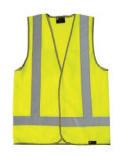






‘People always focus on my time with Gough, as if it defines me, but that was only the beginning.’

In his series of stories of remarkable Canberrans, DAVID TURNBULL meets
Elizabeth Reid, who in 1973, as a 31-yearold arts graduate from Taree, became the world’s first adviser on women’s affairs to a head of government.
When I walk into the foyer of the retirement village, Elizabeth Reid is edging towards me in a walking frame.
At 83, and encumbered with Parkinson’s disease, she is slow and deliberate with her steps and looks just like any of the other occupants.
They all have stories, of course, but this woman is different.
Elizabeth Reid is a genuine trailblazer.
In 1973, the then 31-year-old arts graduate from Taree became the world’s first adviser on women’s affairs to a head of government.
PM Gough Whitlam wanted Elizabeth to help him revolutionise the treatment of women.
“In those days, the entire weight of society – the church, corporations, government and
even the attitudes of people in the street – combined to suppress women,” Elizabeth says.
“’Remember, man was the ‘bread winner’ and ‘the woman’s place was in the home’. To question that was heresy.”
Elizabeth believes Whitlam was decades ahead of his time because he grew up with strong women.
“He had a strong mother, a strong sister, and then married a strong, independent woman in Margaret, and they had a strong daughter.
“He got it, Gough, way back then, he recognised Australia needed to change its attitude to women and our attitude to Aboriginal people.”
It’s important to remember that when Whitlam hired Elizabeth Reid, the Labor Party did not have a women’s policy in its platform.

pill, and a commitment to two days of pre-school for children. Elizabeth spent the first nine months getting to know Australian women. She

“As you see in the street, women are very different, some want to be stay-at-home mothers, others want a career, or the chance to balance work with a family.
“There wasn’t one single list of issues.”
The first serious contribution to policy Elizabeth made came in the lead up to the 1974 election.
“Before leaving the office to go and write his speech for the upcoming election, Gough told us he was going to keep the platform from ‘72 unchanged,” she says.
“He left and I couldn’t reach him.
“In an extraordinary coincidence, a few days later I was on a beach near Cairns, and this colossus emerged from the ocean. It was Gough, and I ran up to him.
“Boss, boss you’ve got to change one thing in the platform. Two-days of preschool discriminates against the poor, what women need is community-based childcare.”
The next step came when Whitlam asked the Conciliation and Arbitration Commission to re-open the wage case to address the question of equal pay for work of equal value.
And then the dominant male order was rocked to its foundations, he established a Royal Commission into Human Relationships.
education, the glass ceiling that kept capable women in junior ranks, and the toxic chauvinism simply could no longer be ignored.
There were 1200 written submissions with hundreds of oral testimonies at public hearings in Sydney, Melbourne, Canberra, Adelaide, Brisbane, Perth, Bunbury and Hobart.
This was the only allencompassing inquiry into relationships ever conducted by a government anywhere, and it spawned research reports on medical education, abortion, attitudes toward sexuality, rape, disability, domestic violence, child abuse and the needs and concerns of migrant women.
To Elizabeth Reid, though, its greatest achievement was simply providing women with a safe space to speak.
Her voice quivers with emotion when she recalls women who’d suffered in the isolation of bad marriages courageously sharing their stories.
Significantly, the Evatt Royal Commission recommended abortion should remain within the jurisdiction of the states, but it suggested abortions up to 22 weeks should be decriminalised.
Whitlam had indeed started a revolution, and there was no going back.
By 1980, Australia had signed the Convention on the Elimination of All Forms of Discrimination against Women adopted by the United Nations.
By late 1974, Elizabeth began to look beyond Australia’s shores.
She was the Australian representative to the United Nations Forum on the Role of Women in Population and Development, and she also led the Australian delegation to the World Conference of the International Women’s Year in Mexico city.
Just before the dismissal in 1975, she fled Australia “feeling like a political refugee”.
“During my time with Gough, I would receive thousands of letters a day, all attacking me in the most threatening way,” she says.
“The church, of course, was aghast even talking about homosexuality or abortion, let alone domestic violence or child abuse and the maledominated media demonised me at every opportunity.
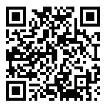
Chaired by reformist lawyer and jurist Elizabeth Evatt, the royal commission brought the secrets of private homes and the business world into the open. The discrimination, and domestic violence, the child abuse. The failures in
“She wanted help implementing the reforms the world conference on women adopted in Mexico.”
After that she began what became a 30-year career with the United Nations in international development and women’s rights in Asia, Africa, the Pacific, the Middle East, the Caribbean, Central America, Eastern Europe and the Commonwealth of Independent States.
She was the founding director of the United Nations Asian and Pacific Centre for Women and Development in Tehran from 1977 to 1979.
She was the director and policy adviser of the UN Development Program from 1989 to 1998.
Her passion to help women, and underprivileged people in the third world never wavered.
Along the way she married for a second time to an American named Bill Pruitt. When he was appointed head of the peace corps in Zaire, now the Democratic Republic of Congo, the newlyweds lived in Africa from 1980 to 1986. Bill suffered from haemophilia. and had numerous blood transfusions.
Tragically, he contracted HIV AIDS from those transfusions and became the first person to die of HIV in Canberra.
“At that time medicine did not know what caused HIV, or how to treat it. The media was full of misinformation, and sensational scare campaigns that demonised the homosexual community.
“It was just terrible.”
As always, Elizabeth wanted to help. Health Minister Neal Blewett appointed her to develop Australia’s first national strategy on HIV AIDS.
Her first step?
A green paper to educate the community and counter ill-informed hysteria.
And that strategy gives us a great insight into the wisdom Elizabeth Reid has gained from her lifelong exposure to cultures from all over the planet.
she has never taken a job for the money or power.
She’s always had a simple desire to help people improve their lives.
“People always focus on my time with Gough, as if it defines me, but that was only the beginning.”
After leaving Australia, Elizabeth found herself working for Princess Ashraf Pahlavi, the twin sister of the Shah, in Iran.
“It’s not equality that women or the underprivileged want,” she says. “It is respect, respect for whatever they want to be.”
Journalist David Turnbull is writing a series of profiles about interesting Canberrans. Do you know someone we’ve never heard of? Share the name in an email to David via editor@citynews.com.au
Arthritis, Pain Support & Emerge ACT is pleased to announce that they will be hosting hydrotherapy pool sessions at the new Tuggeranong Aquatic Centre’s Hydrotherapy Pool.
To utilise our hydrotherapy services at this pool, or at Calvary John James or University of Canberra Hospital, please call us directly on 1800 011 041 or Scan the QR Code for more details.
All users must be financial members of our Foundation and pre-purchase session tickets.
Arthritis ACT staff are always available at our pool sessions, and we provide a wide range of therapeutic hydrotherapy exercise aids, exclusive to our users.
Additional sessions are also available at Calwell Learn to Swim and Aqua Harmony in Kambah (book directly through those pools). Our staff attend these sessions too, to help you with your hydrotherapy program.

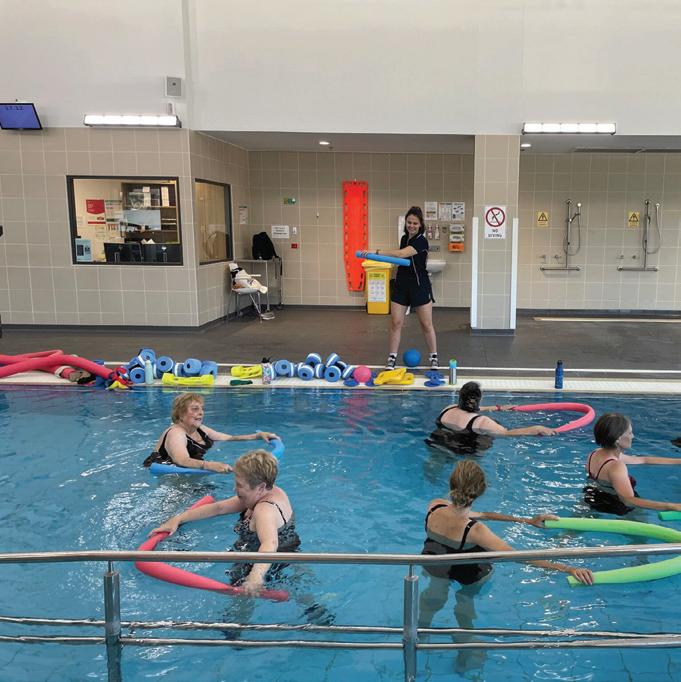
• Tailored Exercise Classes – Strength & Balance, Mat Pilates, Yoga (Chair & Floor), Nordic Walking, and more
• Hydrotherapy Sessions – Gentle, warm-water therapy for pain relief and mobility
• Allied Health Support – Accredited Exercise Physiologists for personalised care
• Pain management programs, lifestyle support, and community wellbeing initiatives
Join our community today – because your best years are still ahead!
Call us now 1800 011 041 or scan the QR code to get started.


‘The Carvalhos bought their Lyons home not knowing it was a Mr Fluffy house, but the ACT government knew.’

“This is a case study on how to compulsorily acquire property without being subject to the compensatory statutes.”
STANHOPE
defend vulnerable Mr Fluffy home owners who deserved to be treated with care and compassion.
The 2014 asbestos remediation program was necessitated by the failure of an earlier attempt in the 1990s to completely remove all asbestos from all the properties that were treated.
In addition, some properties were overlooked altogether.
It is generally agreed that the dwellings were unsafe due to the presence of loose-fill asbestos and that demolition – a hard clean-up –was the only reasonable option.
However, a regulatory decision on the hard clean-up or at the very least a market advisory, should have been taken much earlier than was the case, to protect unsuspecting buyers and families.
It is surely unnecessary to labour the point that an affected household should not be held responsible for the cost of clean-up by whichever lens – ethical, social or regulatory – the matter is viewed.

The clean-up involved vacating an affected dwelling for an extended period of time, and so a model based on acquisition was clearly the most reasonable.
The Carvalhos (who we referenced in an earlier article) say they did not sign up to the eradication scheme for their Lyons home because it was not on “just terms”.
Highlighted, as it is, in bold font in their correspondence, it has all the appearance of the courtroom scene in the classic Australian film The Castle in which the provisions of Section 51 of the Australian Constitution, which detail the legal requirements pertaining to the acquisition of property by government, are dissected.
While the Kerrigans, the heroes of The Castle, simply did not want to move, there was no resistance from the Carvalhos, or for that matter a number of others, on that count.
The Carvalhos have a home, and yet they are “homeless”. They are victims of challenging the ACT government’s asbestos eradication program valuation.
The Carvalhos bought their Lyons home not knowing that it was what is generally known as a “Mr Fluffy” house.
The ACT government knew, but at the time did not publicly identify the properties affected by loose fill asbestos. Nor did it require, at that time, that that information be disclosed in contracts for sale
In fact, to our knowledge, neither those who along with Carvalhos did not sign up, or those who did sign up

value on a home, but that their house should be valued properly.
For that they did not need to go to the High Court seeking an interpretation of the Constitution and its applicability in their case.
A law – The Lands Acquisition Act 1994 relating to the acquisition of interests in land by the executive – already existed and was relevant, for example, in the calculation of just terms.
Section 51 (coincidentally) of the Act provides for compensation where an interest in land is acquired from a person by compulsory process, and prescribes the calculation of the relevant amount in Subsection (2) as follows:
(2) The amount of compensation to which the person is entitled in respect of the acquisition is the sum of $15,000 (or that amount as indexed by section 105) and the greater of the following amounts:
(a) the amount of compensation to which the person would, apart from this section, be entitled;
(b) the aggregate of the costs to the person of acquiring a reasonably equivalent interest in land that entitles the person to occupation of a reasonably equivalent dwelling.
The 1994 Act therefore provided for financial compensation to meet the costs of acquiring an equivalent dwelling, plus an amount of $15,000 as indexed at the relevant time.
Section 105 of the Act prescribes a very detailed method for calculating the degree of indexation. Using the ABS index as prescribed, we estimate the indexed amount as being about $26,000.
The cost of like-for-like acquisition would obviously include costs related to government fees and taxes, such
The model of compensation, as provided in the legislation, appears to be reasonable and fair. It does not, for example, convert any potential future gains, or any benefits from possible enhanced uses beyond the current lease conditions, into monetary compensation. In a similar vein, it does not provide for speculation, so common in market valuations where supply is constrained.
Case for public spending and financial modelling
The then Standing Committee on Public Accounts in its Report on the Inquiry into the proposed Appropriation Bill reiterated the need for the scheme and public spending as follows:
2.18 The Scheme has become necessary to ensure that the legacy of the potentially deadly loose-fill asbestos insulation (Mr Fluffy) that has plagued Canberra since the early 1960s is extinguished.
2.19 Eradication of the loose-fill asbestos insulation from affected homes is necessary because there is no known safe level of exposure to asbestos and, in the case of residential dwellings, there is no way to make homes contaminated with loose-fill asbestos safe to live.
The then Treasurer, Andrew Barr, provided financial modelling to the Committee that concluded that the scheme was expected to have a net cash cost to the ACT government of about $366 million not including the interest costs on the loan from the Commonwealth.
The government expected to spend around $897 million purchasing and remediating properties and undertaking the administrative tasks associated with the scheme, to be
to the Committee.
We will discuss in detail the original financial estimates and the actual outcomes in a separate article. Broadly speaking, however, the government spent much less on acquisition, less on clean-up, earned more from resales, and has some land to spare (ie, yet to be sold).
With the exception of the relatively lower remediation costs – savings –the improvement in financials did not materialise out of thin air.
The case for compulsory acquisition was reasonably clear. A paper published in the Canberra Law Review in 2015 stated: “In the ACT, there already are reported cases of people who have lived in loose fill asbestos affected houses being diagnosed with mesothelioma.
“Consequently, the argument of public safety will likely satisfy the public purpose test. Furthermore, acquiring Mr Fluffy homes in order to demolish their structures and remove extant asbestos seems to be the kind of public purpose endorsed by the High Court.”
Compulsory acquisition or voluntary surrender?
Within a few weeks of the Taskforce being established, the government had taken a position on the working model for the acquisition and clean-up.
The Standing Committee on Public Accounts was advised in October 2014 that the scheme would be “voluntary”.
The government noted it had the ability, pursuant to the Lands Acquisition Act 1994 , to compulsorily acquire land and/or order the demolition of buildings that pose a significant risk to health and safety. The
The government’s advice to the Committee regarding the potential compensation in such a case is at best misinformed, and possibly misleading. We will discuss it in detail in a subsequent article.
The Committee observed that the buyback program was the only offer available to households and went on to recommend that “the ACT government clarify its position with respect to section 51 of the Lands Acquisition Act 1994 by 1 February 2015”.
The government’s response was a terse reference to its advice to the Committee that the scheme was “voluntary”.
It is clear that there was no consultation with affected homeowners regarding the acquisition and compensation model. It is also clear that the government wanted to avoid the provisions of the Lands Acquisition Act 1994 , regarding compensation.
The framework and the modus of implementation developed and adopted by the Taskforce appears to us as a case study on how to compulsorily acquire property without being subject to the compensatory statutes; or how to step around requirements of the law without breaching it.
It is also one for the ethics classes on how not to act generally, but especially, towards people who are vulnerable and deserve to be treated with care and compassion.
We will discuss the scheme in detail in our next article, noting that in our opinion the government has almost certainly shortchanged those residents saddled with a Mr Fluffy home.
Jon Stanhope is a former chief minister of the ACT and Dr Khalid Ahmed a former senior ACT Treasury official.
They slipped the story into the ABC’s internet newsfeed at 6 o’clock on a Wednesday morning and there it died.
Nothing on any of the TV news programs that evening and by the following morning it was gone.
Yet it was unquestionably the most consequential story of the day, the week and perhaps the entirety of 2025.
The opening paragraph set the scene. It could hardly have been more engaging: “In April this year, China installed more solar power than Australia has in all its history. In one month.”
It then provides a context: “This isn’t a story about Australia’s poor track record on solar; Australia is a global leader. Rather this shows the astonishing rate at which China is embracing renewable technologies across every aspect of its society.”
However, there is a more mindbending context further down in the story when it notes what we all know from the tale of woe pouring out of Donald Trump’s Washington: America is heading in exactly the opposite direction.
I am not criticising that placement. I have no criticism of the story at all. Indeed, I think it’s a small masterpiece of the reporter/analyst genre. My concern is with the ABC’s and broadcaster for triplej’s national current affairs program Hack and is host of the podcast, Who’s Gonna Save Us “which explores climate solutions

Before telling the astonishing story of a possible rescue from the jaws of hellishly hot weather, she says:
The ABC, it seems, is wary of anyone writing positive things about China –especially “young people” –even when they appear to be on the side of sustaining the human race on planet Earth.
“Don’t make the mistake of thinking this [Chinese] transformation is driven by a moral obligation to act on climate change”. But by doing so “it is accelerating the end of the fossil fuel era and bringing about the age of the
In the four-page story, she then provides a potted history of China’s economic pathway from the 1990s until the 10-year “Made in China” plan made renewable energy essential to bring their heating emissions down. She quotes Chinese women scientists revealing the country’s energy transformation as “staggering”.
Caroline Wang, the China engagement lead at the think tank Climate Energy Finance says: “Clean manufacturers have made themselves indispensable in the new kind of global economy.”
China is [now] home to half of the world’s solar, half of the world’s wind power and half of the world’s electric cars. “If you go to Beijing today,” Jo Lauder quotes a western scientist, “you can honestly stand at intersections with four lanes going every way and it’ll be quiet as a mouse. The noisiest thing coming past will be a creaky bicycle.”
Moreover, by bringing renewable costs down, China has helped the rest of the world lower the bar to embark on their transition.
Caroline Wang told her: “I think a gap in Australia and other Western countries is knowledge and understanding. China is a complex country… It’s got good and bad. For the energy transition space, which is full of complexity, there’s a real need, for our [joint] strategic national interests, for Australia to understand what’s happening in China.’ Walkley judges, please note. robert@robert macklin.com


I AM _ the ultimate fact. WHO AM I? _ the ultimate question. WHAT AM I? _ the ultimate discovery.
The School for Self Knowledge presents a nine week introductory course in Advaita Vedanta, for those seeking deeper understanding of life and a level of Self Awareness beyond transient world appearances.
Self Knowledge, being the highest form of knowledge, offers profound answers to fundamental questions of life. It integrates our inner and outer worlds, revealing Truth within, and the Unity of Existence underlying diversity. This practical course gives guidance for clear thought, mindful and effective action in life, through direct personal experience.
Canberra City Suite 9, 1st Floor, 131 London Circuit (Bailey’s Corner)
Starts: Wednesday, 15th October – 6.30 pm FIRST NIGHT FREE
Course fee is $190, payable by cash or EFT.



I’ve just come back from a second dose of heart-valve replacement. Critical to a fully successful recovery is participation in an outpatient cardiac rehab program.
On my first occasion a decade ago, there was no delay in joining a professionally run program at the then Calvary Bruce Hospital (now the government-run Canberra North hospital).
This time, however, I was told it would be eight to 12 weeks before I could start this vital part of my progress.
I’m sure there will be weasel-words of attempted mitigation from government authorities for this unacceptable delay.
I doubt if they will include any excuse like “too many Canberrans are having heart attacks”, although I could imagine such a situation arising given Labor’s long record of stressful mis-governance – and not just in the health sector.
Eric Hunter, Cook
While I know what is happening, or more accurately, not happening at the Alexander Maconochie Centre (AMC) and the Transitional Release Centre (TRC), Hugh Selby’s article (citynews.com.au, August 16)
found me reeling in anger and frustration regarding the poor treatment of detainees housed at the TRC.
I applaud Hugh for exposing the bitter truth of what the TRC is – a failure.
The TRC was intended to operate under policies designed to facilitate the reintegra tion of detainees into the community through structured activities.
These policies prioritise safety and security while supporting detainees in maintaining family ties, engaging in work, education, and other reintegration activities. Access to transitional release requires detainees to meet eligibility criteria, apply, and undergo risk assessments.
Hugh’s article exposes the gap between TRC policies and reality: limited work options (although I have heard that ripping up used mattresses is one “employment” opportunity). Further, education is a “no no’, and “structured and other reintegration activities” appears to be a fluffy assertion.
The reality is that there are little to no prospects for detainees at TRC to access op tions for rehabilitation and reintegration into the community. With the extreme restrictions placed on detainees to gain meaningful employment or work experience, they are left to languish in a purpose-built facility that was designed for anything but “languishing”.

I was jogging across the Palmerston grassland and came across this sign. It imputes that cattle grazing is protective of Golden Sun Moth habitat.
Purdons have put out a “survey” purportedly asking people for their views about tall buildings.
But to complete it you actually have to give three reasons for supporting tall buildings. If you don’t, you can’t lodge the response.
Outrageous and ridiculous. Hopefully, no one will take it seriously. We have asked Purdons to withdraw it. Here’s the link: purdon.com.au/buildingheightsurvey
Colin Walters, chair, Inner South Canberra Community Council
It took me 12 months – and repeated requests to my insurer, ASIC, AFCA and the Insurance Council of Australia – before I finally received a detailed invoice for my car insurance.
reduce to something closer to what most of us would expect to pay.
This raises a question that goes beyond my own case: are customers really receiving the discounts that insurers claim on renewal notices, or are these figures simply a way of making inflated base premiums look fair by comparison?
If it takes a year of persistence, complaints and escalation to regulators just to see how my premium was calculated, what chance does the average policyholder have of knowing whether they are being charged fairly?
Errol Good, Macgregor
In summary, there are words on paper, but the actions of management not only bely those words, they kill hope.
Janine Haskins, prison reform advocate
How is that logical when the ACT government spent the previous two months culling kangaroos?
Bruce Bennett, via email




This is something that, under consumer law, I should have received within seven days. When I did receive it, I was left deeply concerned. My seven-year-old secondhand car, insured for a market value of $12,000, was shown as starting with a “base premium” of $4186.40. Only after applying multiple so-called discounts (70 per cent no claim, 20 per cent, 20 per cent) did the final figure
The Coalition loss on May 3 has been covered by numerous letters to CN offering advice on how they can become more electable. But most of the advice is not coming from Coalition voters. The advice includes “stop navel gazing”, conservative is against the narrative and move to the left if you want to win. Those basking in the glory of Labor’s victory are rightly exuberant, but in some cases the exuberance is giving way to hubris and a sanctimonious “holier than thou” attitude. Don’t forget, the once hallowed governments of Whitlam, Keating and Rudd all ended in debt and tears.
Paul Temby, via email




Vi Evans questions the claim that “ordinary Australians” are not keen on nuclear energy and asks, “What is an ordinary Australian?” (letters, CN August 21).
In today’s diverse Australia, the writer’s intent was surely to say most people prefer renewables over coal or nuclear. While Ms Evans doubts the surveys, their consistent findings can’t all be wrong.
Still, what would “ordinary” Australians know about the energy system? Better to ask the CSIRO. In its 2023–2034 GenCost report, it concluded that nuclear power in Australia is far more expensive than renewables and would take at least 15 years to build.
But don’t we need nuclear’s “baseload power” when the sun isn’t shining or the wind isn’t blowing? The CSIRO has said the very idea of traditional baseload is outdated. Modern electricity systems can run reliably on renewables, supported by storage, flexible generation and demand management.
But isn’t renewable energy expensive and isn’t the Tomago aluminium smelter in trouble? The Australia Institute has made it clear that it’s the gas-fired electricity generators that tend to set the price in Australia’s electricity market. Huge energy users like the aluminium industry could get cheaper power if the multinational gas exporters supplied local gas at reasonable
prices.
Finally, Ms Evans claims the world is “switching to nuclear.” In fact, International Energy Agency reports show the opposite.
In 2022, 2023 and 2024, the amount of new global renewable energy added was 320 GW, 507 GW and 700 GW respectively. For nuclear, it was 8 GW, 5 GW and 7 GW. Looks more like a switch to renewables to me.
Anne O’Hara, Wanniassa
The draft environmental impact statement (EIS) for light rail stage 2B has cherrypicked its information, to justify rejecting faster and more cost-effective alternatives, that would get more people using public transport.
The EIS ignores the City to Woden Light Rail: Stage 2A City to Commonwealth Park Business Case, which concluded that light rail would increase travel times from Civic to more than 27 minutes.
It ignores the Light Rail Stage 2 Business Case, which concluded that the base case option, which retains Adelaide Avenue’s transit lanes, offers more than $580 million greater net benefits than the light rail option.
It ignores the government’s most recent cost benefit analysis of bus rapid transit. That analysis concluded that increasing town centre car parking charges, combined with bus rapid transit, would increase public transport
travel by 17 per cent and would be twice as cost-effective as the light rail option.
Bizarrely, the only excuse the EIS gives for rejecting bus rapid transit is URS Australia’s 2012 City to Gungahlin Transit Corridor: Concept Design Report. That report concluded that bus rapid transit offered a better overall outcome for Canberra than median light rail.
Leon Arundell,
Downer
While I have always supported a Labor government, I am perplexed as to what is to be achieved by our federal government’s declaration of “Supporting a Palestinian State”.
Firstly, there is not a current State of Palestine, nor does it meet some, if any, of the criteria to be recognised as a state, which includes an effective government and a defined territory.
I am not convinced that Hamas, Hezbollah and their Islamic state puppet masters, Iran, know or care what the Australian PM thinks about the future of the Middle East.
Collectively, these rogue terrorist Islamic states have one clear goal in mind: to build on Islamic state on the rubble of Israel.
Endorsement by the self-proclaimed President of Palestine, Mahmoud Abbas, gives no legitimacy to this declaration. His administration of more than 20 years has

been defined by corruption, brutality, the rejection of peace and continued support for terrorism.
We appear to have arrived at a juncture in history, where the polarisation of politics worldwide, without any clear “middle”, has enabled the facts to be rewritten purely to give credence to a narrative.
We have Trump in talks with Putin, without the presence of the Ukraine President Volodymyr Zelensky.
We have democratic counties, including Australia, giving credence to Hamas, a vicious terrorist organisation.
We have Trump, a convicted felon, misogynist and bankrupt, the world’s leading peacemaker.
It must be time for another concocted Nostradamus prediction!
Declan McGrath, via email
I enjoyed Helen Musa’s article on living in the 1970s (CN cover story, August 14), especially the mention of Aunty Jack.
I was a medical student at the University of NSW and lived in a “hovel” in Coogee, with a group of other students. At the completion of our pediatric rotation in 1974 we thought we’d like to have a concert for the children.
We wondered about who we could get
as a guest star, given that we had a zero budget. At that time Aunty Jack was very popular, and we were bold enough to ring and enquire as to whether he and Thin Arthur would be our guest stars. They readily accepted, and rode up to the party on the motorbike! There was also another TV presenter called Captain Armstrong, I believe from Channel 10, who also donated a lot of toys for the children, so kudos to him as well.
At the time of the concert, there were two children from Papua New Guinea, Lop and Sophie, who were at the hospital to undergo heart surgery. Their eyes were out on stalks when they saw this large gentleman, in a purple dress with a moustache, and a golden boxing glove.
Peter French, Red Hill
Spring brings the chance of growing your own vegetables, either in a planter window box or in a garden plot outside.
Remember to soak seeds in warm water the night before planting, mix with fertiliser and worms in the earth and water. Seeds, fertiliser and worms may be purchased locally.
Grow some fresh veggies for yourself – be independent
Peter
M Gately, Flynn

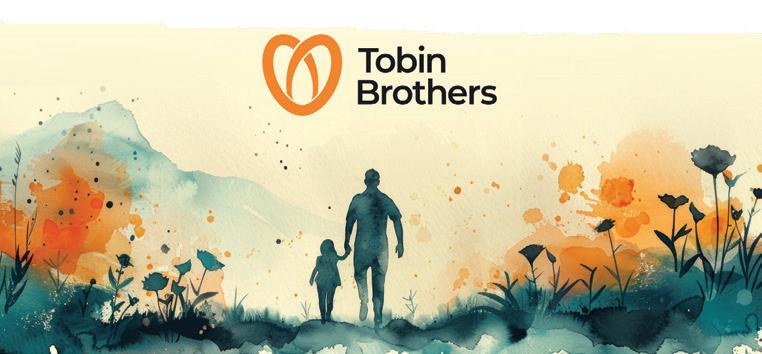
(Answer to the heading is later in the column)
As someone who has spent a lot of time in, on, and under the sea, including the Red Sea, I know it’s difficult to influence the sea – hence my doubts about the biblical story of Moses magically parting the waters of the Red Sea.
I therefore went looking for natural explanations of what supposedly occurred. These are some of the theories:
• Reed Sea theory – Some scholars believe the original Hebrew term Yam Suph (often translated as “Red Sea”) may actually refer to a “Reed Sea”, a shallow marshy area in the region. A strong wind or seasonal changes in water levels could have made it possible for people to cross on foot, with waters returning later and drowning pursuers.
• Wind setdown theory – A meteorological phenomenon called “wind setdown” occurs when strong, sustained winds push water away from a region, temporarily exposing land. In 2010, researchers at the US National Center for Atmospheric Research simulated how a powerful east wind could have pushed back

waters in an area resembling the Nile Delta, allowing a crossing before the waters returned.
• Tsunami or volcanic activity theory – Some suggest that an earthquake or volcanic eruption (possibly linked to the Thera eruption around 1600 BCE) could
have triggered a tsunami. The water might have temporarily receded before rushing back, which could explain the biblical description of the waters returning to drown the Egyptian pursuers.
Another possibility is that there was never a literal parting of the waters. Instead, it’s a story of an extraordinary escape passed on orally that became altered and exaggerated in the telling. In the process it gradually transformed into a more dramatic narrative, attributing the escape to divine intervention.
One could wonder why, if Moses had supernatural powers, he chose to settle the Israelites in an area of the Middle East with violent competing claimants and no oil.
How stories can get altered over time is also illustrated by the oftquoted story of King Canute (Cnut)
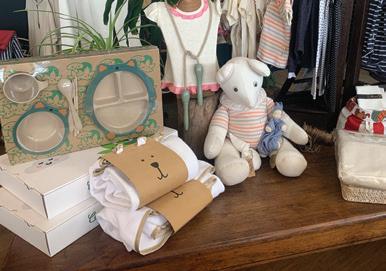


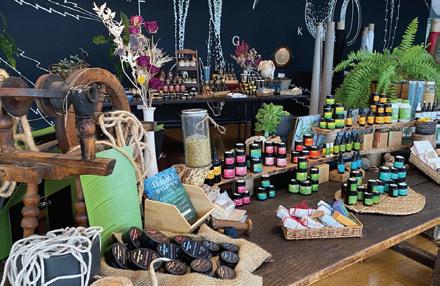

the Great trying to hold back the incoming tide because he thought he had the supernatural power to do so.
In fact, the opposite was the case.
The original story recorded in the 12th century by Henry of Huntingdon describes how King Canute set up his throne in the path of the incoming tide to demonstrate to his sycophantic courtiers that he could not control the elements, demonstrating that his secular power was limited compared to the supreme power of God.
What then do the stories of Moses and King Canute have in common? Both are linked to the sea.
Both demonstrate leadership and authority, though in different ways – Moses as a charismatic prophet and liberator, Canute as an astute monarch.
And both stories have a lesson for us and Donald Trump – Moses’ story emphasises the power of faith, while Canute’s is about the limits of human power and the danger of surrounding oneself with sycophantic followers.
On a lighter note: Dan feels much better now healthwise. On his doctor’s advice he switched in
the morning from coffee to orange juice. His doctor attributes his improved health to Vitamin C and natural sugars. Dan thinks it’s more likely the vodka.
A pastor is giving a sermon on the need for equality in marriage. To test his point, he says: “All the men who are controlled by their wives, please get up and move to the left of the church”.
All the men in the congregation moved to the left of the church except for one. The pastor is surprised but gratified that at least one man has a more balanced relationship with his wife. The pastor says to the man, “Tell the congregation why you didn’t move”. The man explains, “Because my wife told me not to”. Ed was asked out by a lot of women. Then he realised he was in the ladies’ changing room.
Clive Williams is a Canberra columnist.



for people to release their inner artist, Pinot and Picasso studio manager Melissa Boarer, says their core values align with encouraging creative freedom.
Unlike other paint-and-sip classes, Melissa says they are constantly on the lookout for new and exciting ways to spruce up their experiences, running from custom collaborations, bespoke arts and “experience enhancers” such as trivia, games, karaoke and even themed decor.
“The most rewarding part of my job is the joy I get to bring people when they create something,” she says.
“I love being part of their special occasions.
“I also get a sense of pride when guests are genuinely shocked that
especially when they thought they could barely draw a stick figure beforehand.”
Melissa says creativity can be its own form of meditation for the body and mind.
“It’s a way to switch off from the stresses of everyday life and spend a few hours focusing on something that sparks joy,” she says.
“It’s such a calming experience and I love that it’s accessible to so many people, regardless of different levels of mobility or mental capacity.”
Now gearing up for the Christmas season, Melissa recommends people book early to secure a date.
Pinot and Picasso. Shop 6/54 Benjamin Way, Belconnen. Call 0475 782911 or visit pinotandpicasso.com.au
Craft + Design Canberra is a not-forprofit organisation dedicated to supporting artists, designers and makers at every stage in their careers, says CEO, Jodie Cunningham.
Committed to promoting and celebrating excellence in contemporary craft and design, Jodie says their city centre shop presents hundreds of works created by makers from across the region.
“Our gallery showcases a dynamic program of exhibitions that change every six weeks,” she says.
“Together, these spaces provide an inspiring destination for anyone interested in high-quality craft and design.”
Open to all, Jodie says members receive benefits including discounts and exclusive invitations to events.
“We also deliver a year-round program of public workshops designed for participants of every skill level,” she says. With upcoming events, including the Craft + Design Canberra Festival, the Craft + Design Canberra Open Studios, the Arts Organisations Open Day Program and the Craft + Design Canberra Undercurrent Design Market, Jodie says there will be plenty of opportunities to see some of Canberra’s best in jewellery, glass, ceramics, textiles and diverse creative mediums.
Craft + Design Canberra. Wednesday to Saturday, 12pm-4pm. Upstairs North Building, 180 London Circuit.



For Justine Maughan, art studio director and creative arts therapy practitioner, creativity begins with accessibility.
Offering art classes, workshops and holistic counselling using creative art therapies from her studio in Queanbeyan, Justine says she gives her clients the freedom to slow down and experience the restorative, therapeutic benefits found in the process of making art.
“From midlife women to teenagers and educators, my work weaves creativity into community life,” she says.
Justine says creativity and art are vital to health (both physical and mental), as they open a pathway to explore the full spectrum of being human.
“Creative processes allow us to express and integrate experiences,” she says.
“What I love most is witnessing the shift that happens in people. They arrive carrying the weight of the day, and they leave calmer, brighter and more connected to themselves.”
Justine’s work has seen clients navigate PTSD, depression, burnout and life’s challenges, as she helps

curiosity and the knowledge that I will guide you through every step.” Justine runs a Mark Making Monday class for adults that she reckons is the perfect introduction to art.
“The studio is a welcoming space for anyone seeking creativity, calm and connection,” she says.
Justine Maughan – Creative Arts Therapy Practitioner, shop 5, 69-71 Monaro Street, Queanbeyan. Call 0456 308775 or visit justinemaughanholistic.com.au
Pinot and Picasso Belconnen is Canberra’s colourful and creative experience for art enthusiasts and beginners seeking a unique and enjoyable experience. Nestled in the heart of Belconnen, our paint and sip studio offers a fun-filled atmosphere for individuals, groups, and private functions alike.
Whether you’re a seasoned artist or a beginner, our paint and sip art classes in Belconnen offer something for everyone.





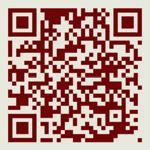
Welcome to NatureArt Lab – where curiosity meets creativity. Explore nature, relax, connect, and learn through awardwinning art programs, tours, and workshops. Our art classes are located in Canberra at M16 Artspace and Brisbane at the Queensland Museum plus online – and we have programs that can take you anywhere with our Australian and international immersive art nature tours.


Build your creative skills, meet like minded people and connect with nature through:
• Nature photography
• Nature journaling
• Bird watching
• Art workshops
• Nature tours & much more!


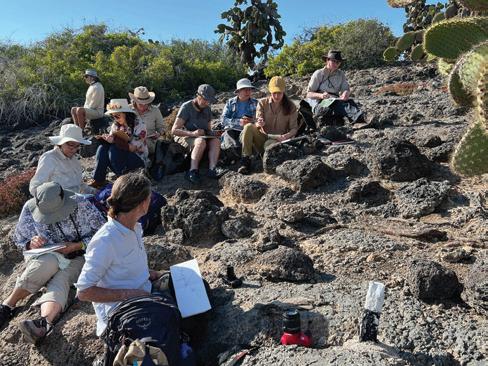
art, nature and mindfulness, says founder Julia Landford.
Winner of several Telstra Best of Business Awards, Julia says NatureArt Lab has created an active and amazing community full of “wonderful skilled teachers and artists with all levels of experience”.
“Art and nature are great for health and wellbeing,” she says.
Established in 2017, Julia founded the organisation after growing increasingly concerned about the increasing number of extinct species.
Combining a love of the outdoors, art and three decades of industry experience, Julia’s vision is the largest employer of artists within the ACT and covers classes in various art mediums, including drawing, colour pencil, scratchboard, mixed media and embroidery, printmaking and watercolour.
the environment.
Now accepting new artists, students will find the room packed with art supplies, science equipment and natural history items.
Alongside their courses and social art sessions, NatureArt Lab hosts nature tours, taking students to see biodiversity in Australia with everything from turtles at Heron Island, insects at Atherton Tablelands and fungi in Tasmania.
They also offer nature tours overseas and have two spots available for their upcoming Galapagos and Amazonian Ecuador adventure, travelling with Julia, entomologist husband Alan, and award-winning photographer/evolutionary biologist Dr Damien Esquerre.
NatureArt Lab, 21 Blaxland Crescent, Griffith. Call 0414 342839, or visit natureartlab.com.au
Surrounding art with care and a sense of celebration
From family photos, travel mementos and sports jerseys to fine art, textiles and three-dimensional treasures, HUG Framing + Gallery owner, Gemma Lingwood, says every piece is treated with care.
“Not only will the piece look its best, but it will become something to be enjoyed on the wall every day,” she says.
Gemma says their gallery wall regularly rotates works from Canberra artists, ensuring local talent is given a platform to share their creativity.
“By framing with care and championing local art, we aim to nurture and celebrate the creative heartbeat of our community,” she says.
Taking over the store last year, Gemma says her favourite part of the work is seeing the stories
behind the artwork.
“Every project has a meaning,” she says.
“Whether it’s a child’s drawing, a wedding photo or an original artwork, helping people preserve those stories while creating something visually striking is endlessly rewarding.”
Previously operating under the name Discount Gallery, Gemma says their recent rebrand to HUG Framing + Gallery after more than 30 years reflects what they do best.
“We surround art with care, protection and a sense of celebration,” she says. “Like a hug.”
HUG Framing + Gallery. 50 Weedon Close, Belconnen. Call 6251 3837 or visit hugframing.com.au





For 60 years, Eckersley’s has been one of Australia’s leading arts and crafts retailers.
“Celebrating 60 years has been a wonderful reminder of how deeply creativity connects us all,” says marketing co-ordinator Christina Misbrener.
“For us, it’s not just about making a business milestone, it’s about honouring the generations of arts, students, hobbyists and makers who have grown with us.”
Inspiring creativity by offering quality products and expert advice, Christina says creativity should be within everyone’s reach.
“We’re committed to providing quality materials at a range of price points so that anyone can create with confidence,” she says.


“We have created a welcoming space for people of all ages and abilities to explore their artistic side, as well as supporting local community initiatives.”
Christina says they are more than just a store: “We’re a hub for creativity.
“We welcome everyone, whether you’re browsing for inspiration, stocking up on supplies or looking for advice on a new project.”
In celebration of its 60-year anniversary, Christina says they look forward to many more years of creating, learning and celebrating art together with the local community.
Eckersley’s Art & Craft. Belconnen, Braddon and Phillip. Visit eckersleys.com.au

We are now HUG Framing + Gallery (formerly Discount Gallery Picture Framing), the same trusted team, with a fresh new name.
We specialise in custom picture framing, transforming cherished keepsakes, personal art, and unique objects into statement pieces that beautifully complement your home and style.
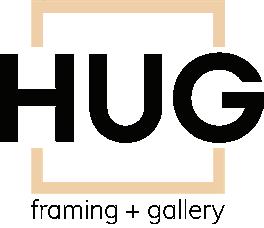
Call us today: (02) 6251 3837 or Visit: hugframing.com.au
Where to find us:
hello@hugframing.com.au
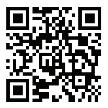

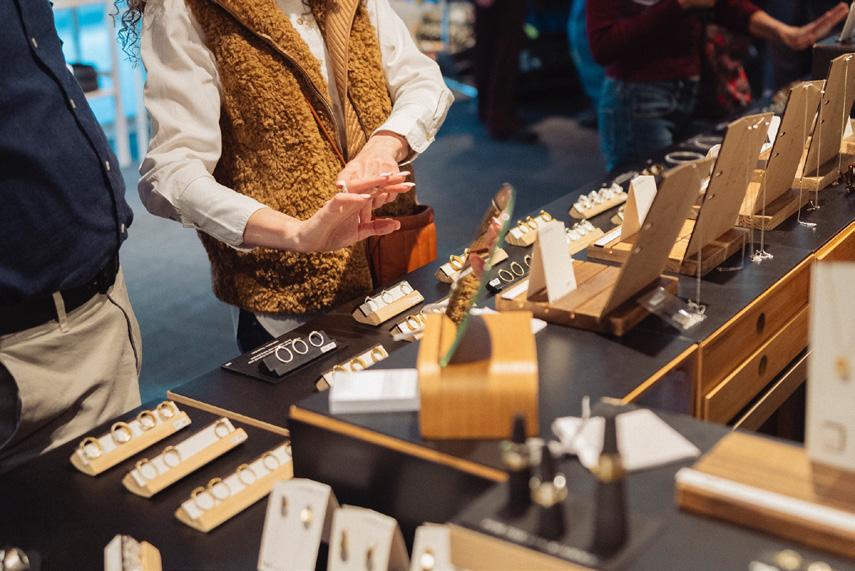



National Women’s Health Week is Australia’s largest national health campaign dedicated to the health and wellbeing of all women, girls and gender-diverse people. It has been a permanent fixture on the Australian health calendar since 2013.
This year’s theme is “Say yes to you”, to encourage everyone to speak up, check in and prioritise their health and wellbeing.
Here CityNews speaks to experts who focus on promoting and helping women feel and look their best.
The doctor making a
Championing women’s health and wellbeing at her Queanbey an practice, Queenbee Women’s Health, Dr Jeannie Ellis says her 30 years of experience in health as a primary care practitioner has given her valuable insight into the health gaps that need to be filled regarding women’s health.
“I’m passionate about women feeling comfortable in a safe environment and having a really good health care service to ad dress issues such as pregnancy, menopause and fertility,” she says.
“Women have a specific set of challenges that the other 50 per cent of the population don’t have, and I think women need a safe space to be able to talk to other women.”

Specialising in menstrual problems, contraceptive choices, PCOS and endometriosis, pelvic pain, miscarriage management, pregnancy choices, ultrasounds, fertility and preconception, antenatal care, menopausal concerns and issues, health checks, migraines and iron transfusions, Dr Ellis said Queenbee has been her dream for the past 10 years.
“Being in the clinic is more than just going
to get an illness fixed,” she says. “It’s about what we can work on together. It’s a journey to better health.”
Queenbee Women’s Health. 69-71 Monaro Street, Queanbeyan. Open Tuesday, Wednesday and Friday from 9am to 5pm. Visit queenbeewomenshealth.com
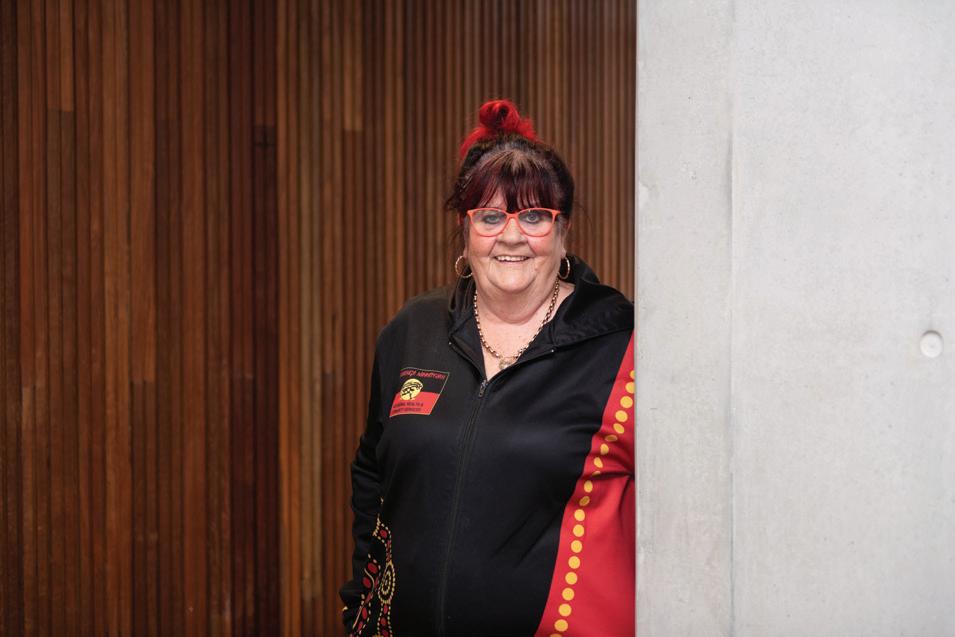
referral and advocacy services.
“Women attending the group have benefitted from a range of health and lifestyle education services including healthy eating, children’s nutrition, managing depression,
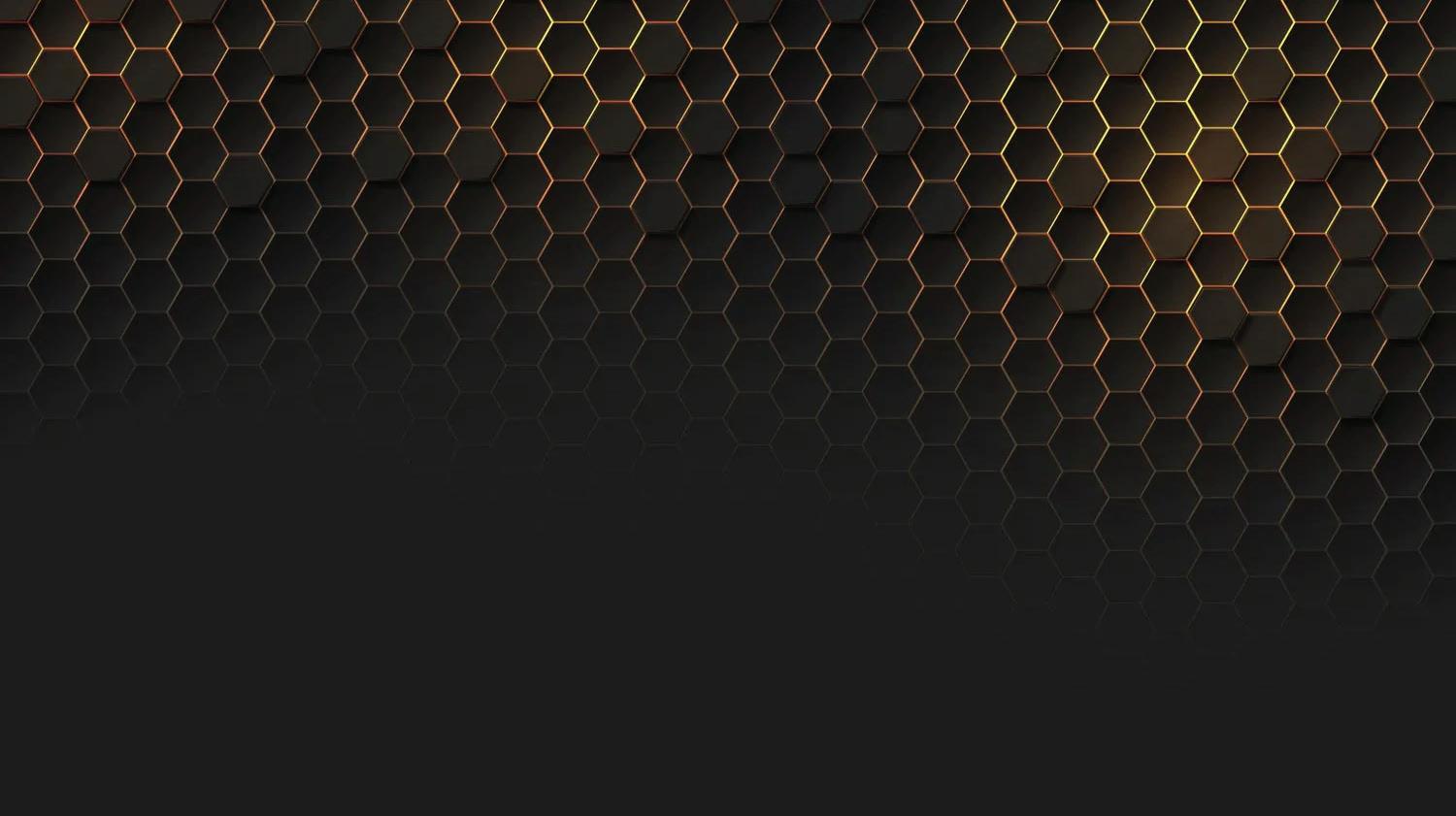













Winnunga Nimmityjah Aboriginal Health and Community Services is proud to walk beside Aboriginal and Torres Strait Islander women during pregnancy and early parenting, offering wraparound support through programs designed to empower, educate and connect.

The AFPP is a free, voluntary program for young Aboriginal and Torres Strait Islander women (under 25) who are pregnant with their first baby. Through ongoing home visits from specially trained nurses and Aboriginal Family Partnership Workers, the program offers support from early pregnancy through to the child’s second birthday.
AFPP helps with:
• Understanding pregnancy and preparing for birth
• Building strong bonds with bub
• Setting goals for the future
• Navigating health, parenting, housing and relationships
It’s all about empowering young mums to give their babies the best start in life — culturally safe, non-judgemental, and all about you.
Winnunga’s Healthy Pregnancy Group is a welcoming, women-only space for expecting mums to come together, learn and yarn. Facilitated by our caring health team, it’s a place to ask questions, connect with other women, and feel strong in your journey.
Topics include:
• Healthy eating for you and bub
• What to expect during labour and birth
• Pain relief and birthing options
• Breastfeeding and baby care
• Emotional wellbeing during pregnancy
Classes are free, culturally safe, and designed to make sure you feel supported, informed and confident.

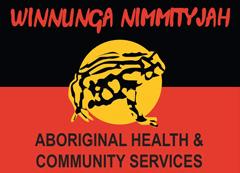
Arthritis ACT has welcomed a new hydrotherapy pool in Tuggeranong that opened on August 25.
“Women carry the majority of the chronic disease burden, with inflammatory conditions and severe arthritis,” says CEO Rebecca Davey.
“This is a really exciting opportunity for the southside community to start feeling relief from chronic pain.”
Run by Arthritis ACT staff, many of whom have lived experience of the conditions they support others with, Rebecca says it’s been a long time coming for those living in the south of Canberra to access hydrotherapy support.
“We want to keep our services affordable and accessible to the public,” she says.
According to Rebecca, health benefits of hydrotherapy aren’t just limited to what the pool can offer, with many participants using it as a way to socialise with others who are experiencing similar levels of difficulty in chronic pain.
“The social aspects are just as important as the pool benefits,” she says.
“Many people attending any of our classes have become close friends, bonding over shared experiences.
Previously running sessions at the University of Canberra, Rebecca says she is excited to see their services extended beyond the northside.
“It’s a rewarding experience to see the difference Arthritis ACT’s services make in the day-to-day lives of those who require them,” she says.

Arthritis ACT, 170 Haydon Drive, Bruce. Call 1800 011041, or visit arthritisact.org.au
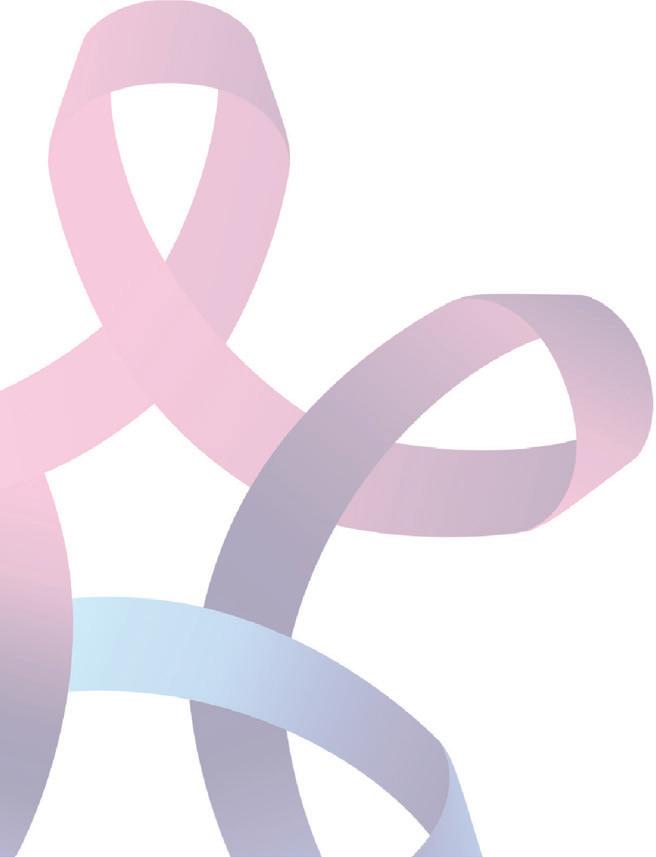
Adhering to routine medical check ups and promptly consulting a doctor if unusual symptoms arise can aid in early detection and disease prevention/modification, says founder of Canberra Family Health Centre, Associate Professor Maryse Badawy.
“Women’s health needs change through different life stages and can be associated with differing and unique health considerations during each phase,” she says.
A Fellow of the Royal Australian College of General Practitioners and of the Hong Kong Academy of Medicine in the Discipline of Family Medicine, Dr Badawy is also involved in the teaching, training and mentoring of medical students and graduates in Canberra.
“I am passionate about women’s wellness and family health and focus on addressing the unique healthcare needs of women,” she says.
A Member of the Australasian Menopause Society, Dr Badawy’s extensive experience covers various conditions relating to women’s health, including cancer screening and manage ment options.
“I’m committed to providing a patientcentred approach by taking the time to listen to my patients, understand their concerns and develop personalised treatment plans and care with empathy and respect,” she says.
Dedicated to empowerment in knowledge and support, Dr Badawy says she strives to give women the power to lead healthy and fulfilling lives throughout all stages of womanhood, and participate in the decision-making for their care.
The Canberra Family Health Centre, Peter Yorke Building, Suite 6, Level 3, 173 Strickland Crescent, Deakin. Call 5133 7112 or visit cfhc.com.au
Bosom Buddies ACT Inc is the only support group for people experiencing breast cancer in the ACT and surrounding NSW region, relying completely on donations.
An expert panel including an oncologist and breast care nurse will talk about breast cancer. The night will also be filled with fun, laughter and food and of course, a cocktail.
30th Anniversary Cocktail Evening
18 Sept 2025 | 6–9pm 59 Cameron Avenue, Belconnen
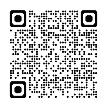













Women’s life stages are based on the reproductive cycle, beginning with menstruation and continuing through menopause. Women’s health needs change through different life stages and are associated with differing and unique health considerations during each phase. Within each phase, females may encounter distinct symptoms and varying disease risks. Adhering to routine medical check ups and promptly consulting a doctor when noticing unusual symptoms can aid in early detection and disease prevention and modification.
In adolescence and young adulthood, puberty, the beginning of menstruation, and the development of reproductive health are associated with hormonal fluctuations resulting in menstrual cycle difficulties and hormonal symptoms. The promotion of a healthy lifestyle, healthy nutrition, exercise and mental well-being as well as educating the adolescent promotes good adult health. Discussing sexual activity in an open and non-judgemental way promotes prevention of sexually related infections and pap smear abnormalities.
Adulthood and reproductive age which spans until the menopause is associated with various health issues, including infections, uterine and ovarian problems. Open discussion of contraception, pregnancy planning, prenatal care and postpartum health including mental well-being are crucial issues for consideration in the adult woman. Again patient education on the importance of regular check-ups, breast and cervical screening are pivotal in achieving and maintaining good health.
Perimenopause and menopause can be associated with severe symptoms , issues relating to bone health, cardiovascular health, and emotional well-being. These arise as the result of the natural decline in sex hormones. Customizing health care for women in this life stage is according to symptoms and the woman making informed decision regarding her management. Adjustments in lifestyle can contribute positively to achieving and maintaining good health and addressing the physical and emotional symptoms associated with this life stage. The first step to addressing any problem is to discuss your symptoms and learn how you can restore symptom control.
Founder of Canberra Family Health Centre , Associate Professor Maryse Badawy is a Fellow of the Royal Australian College of General Practitioners, and a Fellow of the Hong Kong Academy of Medicine in the Discipline of Family Medicine. She obtained a Master of Family Medicine, a Graduate Diploma in Family Medicine, in addition to her
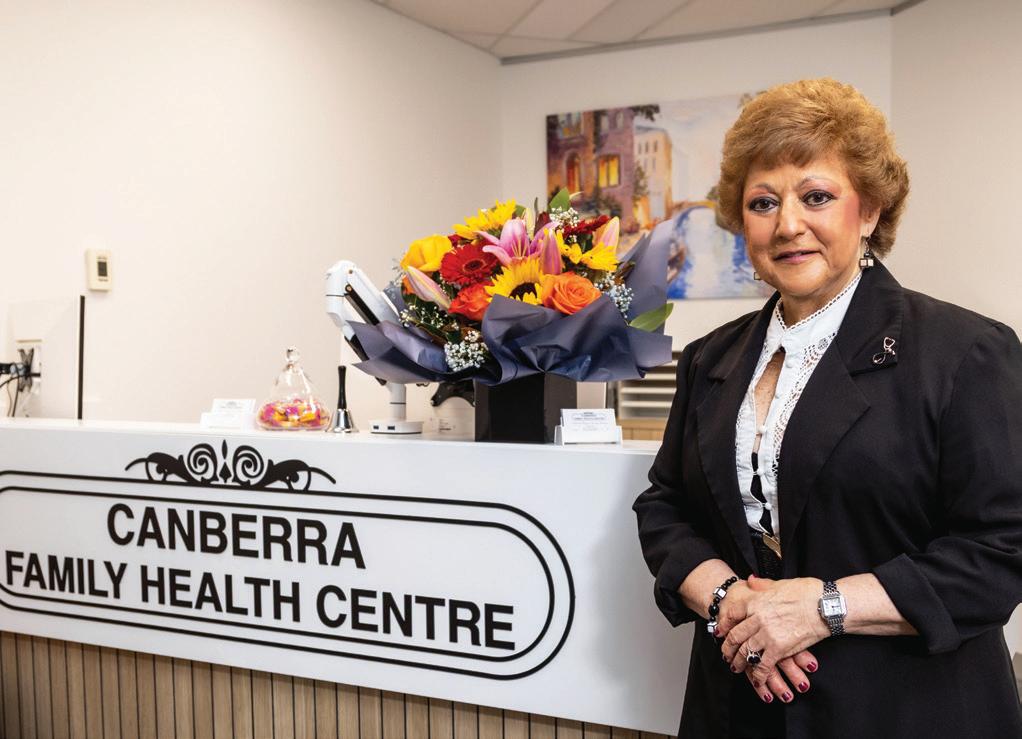
of Medicine / Bachelor of Surgery
involved in teaching, training, and mentoring medical students and graduates. Dr Badawy is a Member of the Australasian Menopause Society.
Dr Badawy has a deep passion for Women’s Wellness and Family Health, with a focus on addressing the unique healthcare needs of women, and has extensive experience in managing various conditions related to Women’s Health, including cancer screening and management options.
Her commitment is to provide a patient-centered approach, where
she takes the time to listen to her patients, understand their concerns, and develop personalised treatment plans and care with empathy and respect.
Dr Badawy is dedicated to empowering her patients with knowledge and support to ensure they understand and make informed decisions about their health. She strives to ensure that imparting women with knowledge allows them to lead healthy and fulfilling lives throughout all stages of womanhood and participate in the decisionmaking for their care.
With many years of experience and a compassionate approach, Associate Professor Maryse Badawy has a firm commitment in the delivery of medical care.
ONE-HOUR APPOINTMENT Our initial 1-hour appointment includes a complete medical history, a thorough examination, any necessary tests, and a personalised care plan focused on prevention and proactive health.
As a female GP in Canberra, Dr. Badawy understands the unique medical needs of women. Our services include:
• Routine and preventative women’s health checks
• Support for hormonal and reproductive health issues
• Management of women’s chronic conditions
• Mental health support
• Pre-pregnancy and postnatal care
We are here to support women at every stage of life, offering care that is compassionate, confidential, and comprehensive.
Generational Family Care: With a career spanning leadership roles and academic accomplishments, Dr. Badawy has even provided family care for up to four generations of the same family.
Dr. Badawy is committed to providing personalised, evidence based care tailored to your needs.



Specialist care for people affected by cancer, surgery, or chronic swelling
Nim of Canberra’s Practitioners
Meet Nim Osborne of Canberra’s Few Accredited Lymphoedema Practitioners
brings 15 years of massage experience with focus on supporting undergoing with or skilled helps restore and the navigating life
Nim brings over 15 years of massage therapy experience with a strong focus on supporting people undergoing cancer treatment, living with anxiety, or in recovery. Her gentle, skilled approach helps restore comfort, flow, and connection to the body especially for those navigating life after diagnosis.
As an Accredited Lymphoedema and the Australasian Association and Therapists (AMT), Nim offers a level of this highly specialised area.
As an Accredited Lymphoedema Practitioner and member of both the Australasian Lymphology Association (ALA) and Australian Massage Therapists Association (AMT), Nim offers a rare level of expertise in this highly specialised area.
Opening Hours: Monday to Friday 9:00am to 3:00pm & after hour by appointment
To make a booking please call Nim on 0412 885 804






Occurring when the body cannot produce or make enough insulin, credentialed diabetes educator at the Diabetes Australia Telehealth Clinic, Karen Jameson, says diabetes can have significant effects on women’s health, both physically and hormonally.
“It can influence reproductive health, pregnancy and the risk of certain complications like heart disease, nerve damage and mental health,” she says.
According to Karen, normal hormonal changes in a woman’s monthly cycle can make managing blood glucose levels more complicated for women living with diabetes.

Karen Jameson, Diabetes Australia Clinic – Credentialled Diabetes Educator.
“As women, we often aren’t given the opportunity to embrace our emotions,” says Highlands Centre for Healing owner, Soo Woods.
“We’re encouraged to brush them under the rug and get on with life, but it’s my job to help clients understand emotions in their entirety, even the ones that have got stuck along the way.”
At Highlands Centre for Healing, Soo specialises in emotional healing, holistic health and wellness, mindful
importance of wellness.”
While premade retreats are available to attend, Soo also offers clients the ability to design their own retreat, starting with duration all the way to selecting activities and deciding on accommodation and catering.
“Our holistic wellness approach offers wellbeing for your mind, body and soul and provides all natural support for nervous system regulation.”
Drawing from more than a decade of work in holistic healing, Soo says people when they walk away from the


“They also experience increased insulin resistance during the luteal phase, potentially requiring insulin adjustments” she says.
“Uncontrolled diabetes is dangerous,” says Natalie Smith, general manager of Health Service Operations at Diabetes Australia NSW & ACT.




deakinwellbeinghouse.com.au
Francis Chambers, Level 3 - Suite 12, 40–42 Corinna St, Woden
With Diabetes Australia’s telehealth clinic, you can speak to a credentialled diabetes educator or dietitian from the comfort of your own home.
We offer:
M Blood glucose monitoring and management
M Medication reviews
M Guidance on accessing and using technology and tools
M Diet and nutrition guidance for optimal health
M Sustainable lifestyle change strategies
M Understanding and preventing complications
Book your telehealth appointment today.
“Every woman’s body, lifestyle and stage of life is different, so seeing a health professional for a management plan is a proactive step towards a healthier future.”
Diabetes Australia offers a range of non-judgmental support services including clinical services at the Diabetes Australia Clinic, as well as access to their free national membership program YOUnitited.

“You might be feeling okay, but blood with consistently high glucose levels will damage nerves and vessels which includes your eyes, heart, kidneys and nerves.
“When you’re dealing with diabetes, it’s better to know and understand how to live well with the condition.”
Diabetes Australia. Tenant B, 19-23 Moore Street, Turner ACT. Call 1800 177 055 or visit diabetesaustralia.com.au


Bosom Buddies ACT is marking its 30th year with an evening of community and magic at the 59 Cameron Ave Conference and Meeting Room
(above The Mecure), Belconnen, 6pm-9pm on September 18.
“Please join us for carnival-themed activities, fantastic prizes, gourmet catering and inspiring guest speakers,” says executive officer Carolyn Murphy.
All funds raised will continue the support of those affected by breast cancer. Tickets are $66 and can be booked via 0406 376500 or at bosombuddies.org.au
Bosom Buddies supports women diagnosed with breast cancer when they need it most, says Carolyn.
The organisation started 30 years ago when a group of women diagnosed with breast cancer came together to support each other.
“What evolved is a grassroots independent charity, exclusively dedicated to offering free, handson peer and ongoing support to those affected by breast cancer and their loved ones,” she says.
Canberra’s sole provider of breast cancer support services, Carolyn says it provides services for free due to generous donations and support.
“Breast cancer doesn’t discriminate, it affects all genders and age groups,” she says.
“Everyone will know someone who has been affected, and it impacts us all.”
Bosom Buddies provides “Buddy Bags” containing items to assist pre and post surgery, as well as information on available services to all patients before surgery.
Either one-on-one or peer support is available, with opportunities to catch up with others in group environments and shared services.
“This support is ongoing and continues for as long as needed,” says Carolyn.
Call 0406 376500 or visit bosombuddies.org.au

For many women, life after breast cancer can bring new challenges, says Deakin Wellbeing House founder, Nim Osborne.
“Lymphoedema occurs when lymph nodes that have been removed or treated with radiotherapy begin to swell,” she says.

“It may appear months or years after treatment and, without support, can worsen.
“The good news is that early, gentle care can help women stay comfortable, active and confident.”
Nim provides evidence-informed therapy tailored to the individual stage of cancer that her clients are in, from diagnosis to long-term recovery.
An accredited lymphoedema practitioner and ALA member with advanced training in oncology massage and complex physical therapy, she says every session is adapted for safety and comfort, including pressure, positioning and duration.
“A typical plan may combine

manual lymphatic drainage, graded movement, skin-care education and guidance on compression, along with practical tips for daily life,” she says.
“Women often report relief from heaviness, tightness and discomfort, improved sleep and a greater sense of ease in their bodies.”
Nim urges women to book an assessment if there’s swelling in the arm or chest wall, jewellery suddenly feels too tight or a feeling of fullness occurs.
“We’ll discuss your treatment history, assess risk and create a personalised plan that fits your goals,” she says.
“If you’re navigating breast cancer treatment or recovery, and want supportive care that meets you where you are, I’m here to help.”
Deakin Wellbeing House, Unit 12, 40 Corinna Street, Phillip. Call 0412 885804 or visit deakinwellbeinghouse. com.au
Family owned and locally operated, Total Body Contouring owner Christy Christensen says she is proud to be working with cutting-edge technology to help Canberrans feel like the best version of themselves.
“We are Canberra’s trusted local choice for body contouring, offering expert care and results our clients love,” she says.
With years of collective experience within the organisation, Christy says they are constantly keeping up to date with new and revolutionary technology to create a pain-free experience.
Currently offering a $300 fat freezing treatment using Cooltech technology, Christy says they can target up
Total Body Contouring is also the only Canberra organisation to have an emerald laser.
“The emerald laser is a noninvasive, FDA-cleared, fat-reduction treatment that uses low-level green laser technology to shrink fat cells without pain or downtime,” says Christy.
“It is suitable for individuals with a BMI up to 40 and helps reduce body circumference safely and effectively,” says Christy.
“With no bruising or swelling, it’s a gentle and convenient option for those seeking non-invasive body contouring.”
Exclusive to Total Body Contouring, Christy says the technology benefits









By Jackie WARBURTON
Rhododendrons
Although slow


new growth on specific branches by slightly damaging the bark to stimulate bud development. This is done by making a small cut into the outer layer of the stem, without completely encircling it, to encourage new growth in a desired area.
Scoring encourages the buds to shoot new branches and the leggy growth can be pruned off to give a compact floriferous shrub the following year.


Their branches can turn into sculptural trunks and take on a small-tree shape that is beautiful in itself.
Most rhododendrons have strong, smaller branchlets that generally grow and branch from the tips, which if left unpruned, can become leggy.
Rhododendrons have dormant buds that are formed on the branches over summer that will shoot in spring if they’re scored just below the dormant bud.
Also known as notching, scoring is a pruning technique that encourages
They have shallow roots and need mulch around the base and dripline of the tree. They prefer an acidic soil, so plant them near camellias and azaleas.
Yakushimanum hybrids are thrip resistant, have compact growth and grow to a lovely mound to about a metre tall. They’re also terrific for pots or small gardens.
The foliage is a little different and more slender than its counterpart. A hybrid, it tolerates more sun and would do well as an evergreen shrub on a balcony or courtyard.


FLOWERING now in the native garden is Isopogon cuneatus, a hardy, upright small shrub that blends into the landscape.
Although endemic to WA, it grows well in Canberra. Its soft pinkish/ purple flowers are most unusual and can give the native garden some colour in winter.
They are of the Proteaceae family, so ensure when fertilising (and natives in general) to use only native fertiliser.
Our clay soils make it a little tricky to grow many natives that are not from our region, but sourcing plants that are grafted on to root stock more suited to our soils will help widen the choice.
Mulching the native garden helps keep weeds down and moisture in the soil. Any organic bark will do the job.
INDIGOFERA australis is coming into flower now and contrasts well with wattle, that is flowering too.
Both are from the legume family and can be beneficial for adding nitrogen into the soil to help other plants after them grow. Given the right conditions, they can self-seed and be replanted.
THE must haves of all herb gardens is to add mosquito and fly-repellent plants such as sage, rosemary, cat mint, lemongrass and
lavender.
Mix as many of these plants into entertaining space as possible and use sandalwood or lemon eucalyptus as they are the most disliked scents for mosquitoes. Using body oils or products with these ingredients outdoors will also help to keep mosquitoes away.
Mosquitoes will reproduce in any source of water or ponds that don’t have movement or waterflow. Keep water dishes cleaned out weekly. An outdoor fan will help, too. Mosquitoes are attracted to white bulb lights, so switch to yellow lighting to reduce other pests such as moths as well. Spray garden beds with neem oil if there is a persistent problem.
jackwar@home.netspeed.com.au
• Bring a sprig of daphne inside the house for fragrance.
• Use lime sulphur for “blueing” hydrangeas.
• Water indoor plants only with tepid water.
• Fertilise bulbs with pelletised organic fertiliser.
• Keep dishes of water clean for wildlife as the weather begins to warm and the bees arrive.

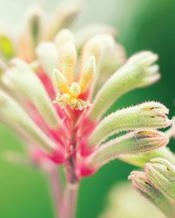
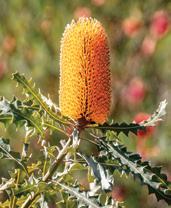


By Helen MUSA

Audiences planning to be at the public schools’ gala showcase at the AIS Arena in September should plan on fastening their seatbelts to witness more than 1500 student performers taking a leap into the unknown.
Enter the Unknown is the theme chosen by student ambassadors from years 3 to 12 for the 2025 Step into the Limelight schools arts showcase.
It offers an invitation for students to step into new creative territory, celebrating “imagination, innovation and the thrill of exploring what lies beyond the familiar”.
The initiative involves students from more than 65 public schools and is paralleled by an art exhibition held at M16 Artspace earlier in the year.

After months of rehearsing and planning by performers and crew, the result will be a variety show involving dance drama, music, circus and new media.
When I catch up with director and production manager Emily Appleton at the ACT Education Directorate’s instrumental music
headquarters in Kaleen, I find that this is not a massed military-style operation, but rather a carefully organised artistic endeavour involving extensive auditioning well before the process of rehearsals has begun.
Individual students audition to become members of the Step into the Limelight Performing Company, then take a work of
art from page to stage, audition, then gain experience as an artist, a member of the backstage crew or student producer.
This year, Appleton says, there will be two evening performances with identical programs.
Founded in 2007, Step into the Limelight is determinedly non-competitive. Its focus is
on public education and is a way of showing the growth of arts learning in the ACT.
Refurbishment at the AIS Arena meant that last year the showcase was held in Llewellyn Hall, “but the AIS is different, it’s wraparound”, Appleton says, enthusing about the fact that 61 schools out of 90 are participating.
The model of the showcase is everevolving. For instance, last year schools could enter whatever they were producing, which was then put together under a theme.
But Appleton and her colleagues felt this didn’t offer enough student voice, so the young ambassadors were chosen and came up with some fabulous ideas about circus and magic.
Acting on a directive to create something more akin to the NSW system’s Star Struck, Schools Spectacular, Southern Stars and Pulse Alive, they went on an auditioning round.
Under the auspices of the instrumental music program, they asked for volunteers from schools, but also talked to colleagues in NSW, going through their catalogue and picking up numbers such as My Island Home and the theme from 2001 A Space Odyssey.
Other favourites were the themes from the James Bond and Austin Powers movies.
The eclectic program will feature percussionists, a rock band, a classical instrumentalist, poetry read by students, hip-hop, a First Nations dance ensemble and a huge physical
theatre item called A Million Dreams, which tries to bring in as many people as possible.
So far as directing is concerned, volunteer teachers have played an important role, teaching singing, co-ordinating online and physical rehearsals, and pulling it all together ready for the gruelling round of live technical dress rehearsals which follow.
A teacher from Amaroo School has been working with singers and another from Melba Copland Secondary School has been co-ordinating costumes.
The technical side will be handled by Eclipse Lighting and Sound, who have years of experience in large-scale shows at the Arena.
The instrumental music program, out of which the event is co-ordinated, and its principal, Joel Copeland, have had a leading role to play in all aspects but in particular co-ordinating the Limelight Orchestra sourced from all schools, which will be on stage all the time.
Director Appleton, a career dance-drama teacher, considers herself more a producer and says that working with industry professionals such as Eclipse has been amazing for school students.
“The goal is for kids to have a wonderful time,” she says. “How cool is it that our students are having such an experience in the arts?”
Step into the Limelight, AIS Arena, September 11-12.

I love a gritty murder mystery as much as the next person, but sometimes all the alcoholic, divorced detectives and gloomy blue lighting can get a little tiring.
Therefore, it’s refreshing to see a new crime flick, The Thursday Murder Club, on Netflix, which rounds up an unconventional group of characters to crack a case.
It’s not a jaded, weary eyed investigator at the centre of this murder plot, but four unassuming retirees with a burning interest in true crime.
This peculiar quartet meet every Thursday to discuss famous cold cases and study how they were solved.
Amongst the group is Elizabeth, an ex-spy who hasn’t lost her eye for detail; Ron, a fiery former union leader; Joyce, a retired nurse who knows how to work the room; and Ibrahim, a former psychiatrist fascinated by how the mind ticks.
This curious crime hobby of theirs is usually done for fun, but that changes when an actual murder takes place that’s connected to the retirement home.
Now the club has to put their passion and life experience to the test if they are to solve a real case.
It’s based on an international best selling book by Richard Osman, which came out in 2020. The premise was begging for a Netflix adaptation and the cast playing this motley crew of murder sleuths is stacked with big

Helen Mirren, Pierce Brosnan, Ben Kingsley and David Tennant are all in the line up.
It’s part drama but more comedy with some surprisingly emotional twists.
It won’t be for everyone, but the Thursday Murder Club’s biggest strength is undoubtedly lighting up a genre so often full of relentless doom and gloom.
THIS month SBS On Demand has picked up a new thriller series that comes from Mark Williams, a co-creator of Netflix’s hit series Ozark.
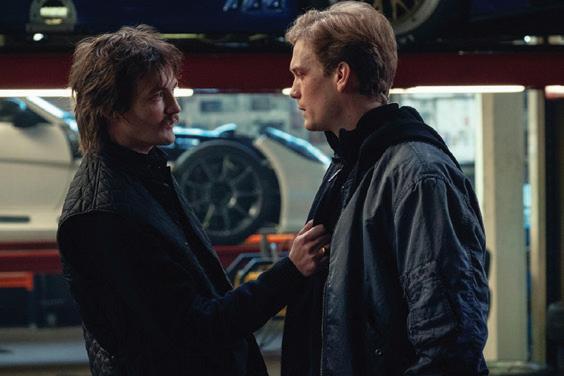
Harbour… The first eight episodes are now streaming.
Despite a lacklustre ending after four seasons, Ozark stands as one the Netflix’s strongest original series, so any new project from Williams was bound to generate some hype.
Williams’ new series is called Safe Harbor and it follows a talented computer hacker named Tobias (played by Game of Thrones star Alfie Allen) who, together with his ambitious best friend Marco, dreams of breaking into the world of tech billionaires.
An unexpected opportunity comes along when the duo has a run-in with the Irish mafia, which wants Tobias’ skills to hack


into the port security system at Rotterdam, allowing them to discreetly move huge drug shipments.
What starts as a way to make some quick money soon spirals out of control as Tobias and Marco get pulled deeper into the mob’s world.
To those who have watched Ozark this all may sound somewhat familiar. A genius
with a specialised talent that becomes a tool for organised crime. Even if Safe Harbor is retreading some of the same ground as Ozark, the hook is so irresistible it doesn’t matter anyway. The first eight episodes are
AS realism in war films goes, it doesn’t get much more authentic than what is on display
The new film streaming on Amazon Prime Video tells the story of a real life US Navy Seal operation that went horribly wrong in Iraq
Seal Team Alpha One were forced into an intense and deadly firefight when Al-Qaeda soldiers engaged them inside a civilian building in the city of Ramadi.
Ray Mendoza, one of the Navy Seals involved, has co-written and co-directed this new film alongside Alex Garland in order to tell the harrowing story in all its details.
The film uses first-hand accounts from those who were on the ground and plays out in real time. The real-life firefight lasted around 90 brutal minutes, the same length as the film. It’s 90 minutes well worth the time.

By Helen MUSA

Noah Szto is a Melbourne comedian for whom doctoring is just a side hustle. His new musical comedy show, Med School follows him as he fumbles through the many mishaps and misadventures of his reluctant medical journey. The Street Theatre, September 6.
ACT-schooled comedian Kirsty Webeck is back home with her show Everything I Need to Say About Sea Creatures at The Street Theatre, September 5.
Hidden Canberra is Shortis and Simpson’s love letter to the “the wildly interesting and quirky depth” of the Canberra region as observed since they moved here in 1996. Smith’s Alternative, September 6.
CityNews art reviewer Barrina South’s debut poetry collection, Makarra, has been shortlisted for the 2025 Prime Minister’s Literary Awards, to be unveiled at the National Library of Australia on September 29.
Canberra Art Fair 2025 is the brainchild of artist Margaret Hadfield. Concerned about gallery closures and the disappearance of exhibitions such as the Canberra Outdoor Art Show, she hopes to provide an outlet for local artists’ sales. Fitzroy Pavilion, Epic. September 5-7.
Governor-General Sam Mostyn and music-loving Nobel laureate and former ANU VC, Prof Brian Schmidt, have been announced as the new patrons of Canberra International Music Festival.
Sincere Apologies is a show that explores what it means to apologise in a world full of broken systems, failed relationships, and bureaucratic disclaimers.

participatory performance is at Tuggeranong Arts Centre on September 6.
Belco Arts has announced two public artworks for the new Gungahlin Community Centre. Richard Briggs has been selected to create the welcome statement artwork, while Belinda Smith and Ruth Della have been commissioned to deliver the courtyard installation.
In Shimmying with the Schumanns, soprano Sarahlouise Owens and pianist Natalia Tkachenko throw light on the household of Robert and Clara Schumann through lieder and songs by the Schumanns and their mentor, Brahms. Art Song, at Wesley Music Centre, September 6.
Possibly one of Australia’s best-kept exhibition secrets in 2025 was Writers Revealed: Treasures from the British Library and National Portrait Gallery, London.
It was held at the Home of the Arts (HOTA) Gold Coast gallery between April 12 and August 3.
The profusely illustrated hardback of the same title, edited by Alexandra Ault and Catharine MacLeod, (National Portrait Gallery and British Library $55), provides a permanent record of a stunning exhibition.
In late 2001, the National Library of Australia exhibition, Treasures from the World’s Great Libraries, proved so successful that, in the last days, people were queuing around the NLA block to get in. One wonders what the numbers would have been like if Writers Revealed had been held in Canberra.
Having said that, many congratulations are in order to HOTA to exhibiting rare manuscripts from the British Library (a few in facsimile), first editions from HOTA, and 70 stunning NPG portraits, offering an insight into the lives and works of some of history’s most influential English language writers, such as William Shakespeare, George Eliot, William Blake, the Brontë sisters, JRR Tolkien, Virginia Woolf, and contemporary writers such as Zadie Smith and Kazuo Ishiguro.
One of the items that didn’t make it to the exhibition was Jane Austen’s portable mahogany writing desk, held by the British Library. According to a HOTA guide, the desk was stopped by Australian customs from entering the country due to possible wood infestation.
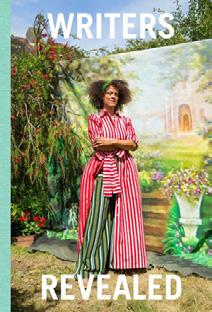

The British Library understandably refused the Australian Customs’ physical testing of the wood, so the desk was returned to London.
Austen fans took solace from viewing an unfinished watercolour of Jane by her sister Cassandra, sketched in 1810.
The exhibits were organised in five thematic sections or “chapters”: In Search of the Author, The Journey to Success, Suppression, Censorship and Secrecy, Fame and Writing to Change the World.
There are too many highlights to list, but they include Virginia Woolf’s handwritten manuscript for Mrs Dalloway; handwritten and illustrated letters from JRR Tolkien to his grandson that echo his work in The Lord of the Rings; a diary entry by Lewis Carroll discussing Alice in Wonderland; the printer’s manuscript of Wordsworth’s poem I wandered Lonely as a Cloud; Lord Byron’s sardonic dedication to archenemy Robert Southey from the original
manuscript of Don Juan and the play script of Dracula, containing ink annotations by Bram Stoker in 1897.
The portraits accompanying the manuscripts and books provide superb visual companions. They included the only portrait painted of William Shakespeare during his lifetime; Augustus John’s portrait of Dylan Thomas and TS Eliot’s modernist portrait by Patrick Heron.
The anonymous portrait of John Milton as a Cambridge student was exhibited next to Milton’s 1667 agreement for Paradise Lost, which is the earliest surviving British contract between an author and publisher.
THE relationship between author and publisher was crucial in the books selected by the British Book Society between 1929 to 1969.
Before the Richard and Judy, Oprah Winfrey and Reese Witherspoon book clubs and Tik-Tok
book influencers, there was Hugh Walpole and the Book Society, which British academic Nicola Wilson covers in an excellent survey, Recommended – The Influencers Who Changed How We Read (Holland House. $38.95).
Before the Book Society, readers had to rely on circulating or public libraries and personal book ownership was not common.
For 40 years, the judges panel of the Book Society, notably, in its first two decades, comprising Hugh Walpole, JB Priestley, Sylvia Lynd, Cecil Day-Lewis and Edmund Blunden, “literary influencers”, chose from the best of fact and fiction for subscribers in more than 30 countries.
Wilson juxtaposes their personal lives and interactions with the selections, which
By Helen Musa
Among the many things that arts and science have in common is the encouragement of curiosity and creativity.
The National Science and Technology Centre’s long-running current exhibition ZAP! CLANK! POW! is an example of how to do this. With a loud title that conjures up what Questacon describes as “shocking and surprising science,” you don’t just look at the 17 interactive exhibits, you use them, play with them and experiment as you travel through the world of electricity, (ZAP!) machines, (CLANK! ) and motion (POW!). It’s a clever way to explore real scientific principles.
I was lucky. My very overqualified guides for the journey through the forces of science were the director of Questacon, Jo White, and the senior exhibition designer Ella Cameron, who supervised the build of each exhibit at Questacon’s centre in Deakin.
Cameron, a graduate in industrial and product design from the University of Canberra, has worked in all phases of design from concept through design development, technical design, troubleshooting on the workshop floor, and installation focusing on cultural museums, children’s museums and entertainment centres.
She is quick to praise her colleagues, the curators who came up with the ideas behind the show and the catchy comic-
would arrive for subscribers wrapped in “Book Society Choice” yellow bands. The increased print runs from Book Society choices enabled prices to be reduced

Book Society publication enhanced the career of many authors including Graham Greene, whose publishing career was arguably rescued by the Book Society’s selection of Stamboul Train in 1932. Books by Evelyn Waugh, CS Forester, Noël Coward, WH Auden, HG Wells and. Somerset Maugham are documented alongside many now long forgotten. Rosamond Lehmann, EM Delafield, Dorothy L Sayers, Rebecca West, Daphne du Maurier, Elizabeth Bowen, Dodie Smith, Nancy Mitford, Rose Macaulay and Mary McCarthy all featured in the female author selections.
One of the aims of the Book Society was to democratise knowledge and culture. With readers today impacted by digital alternatives and resulting lim ited attention spans, Recommended is a fascinating reminder of a different era of book buying and reading habits.


book feel, matching the visuals.
White says: “Whether it’s lifting yourself off the ground, exploring the invisible forces of magnetism or building something that really flies, this exhibition promises a fun and meaningful discovery of science for the entire family.
“It’s all very interactive, it’s all about having fun.”
For this exhibition, the forces of electromagnetism, electricity and motion have been reimagined so you never know what you’re going to do, she advises as she shunts me towards the hands-on Pulley Power exhibit where some serious physical effort is needed.
One thing White and Cameron stress is their attention to the question of gender preferences when it comes to exhibits about
because of so many blokey examples used in experiments.
“Although we’ve come a long way, a lot of thought has been put into that,” White says. White’s own favourite of the show is the Make a Circuit module – ”very instantly rewarding,” she says.
But beyond instant gratification, there is a more serious intent, seen in the provision of QR codes for at-home experiments that are also accessible on YouTube.
“The whole idea is that you start out playing, but you might like to go into a question deeper when you go home,” she says.
ZAP! CLANK! POW! at Questacon until February 1.


Andre Wilks is switched on, passionate and dedicated to making his new restaurant, on Brierly Street, Weston, a smashing success.
He has his finger on the pulse, and we watched him move about Andre’s Osteria as we dined on a delish lunch, making sure everything was “just so” and everyone was happy.
We certainly were.
Andre’s Osteria is a precious addition to the Weston dining scene. Housed in the space formerly home to My’s Vietnamese, the restaurant specialises in scrumptious food inspired by the Mediterranean.




twinstitch.upholstery Like us on Facebook Call or email us today! 0422 073 665 61813511 toni@twinstitchupholstery.com.au
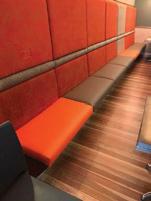


We admired the interior, featuring warm and inviting olive green accents, comfy bench seating, individual wooden tables and colourful, funky wall art. The massive windows along the front of the restaurant ensure natural light floods in.
Challenged to choose, since so much sounded inviting, we decided to share so we could tastetest several dishes.
The opening act – carbonara arancini – was nothing short of excellent. The rice balls featured a thin slice of Italian cured meat on top, and they were soft and oozy on the inside ($8 each).
Our massive prawns ($12 each) were complemented by a punchy salsa verde. Chargrilled to perfection, these beauties were sweet and succulent.
Next, we shared a dish of delightful, lightly fried gnocchi ($21) with an exotic mushroom medley and smooth and sophisticated thyme cream. For presentation, taste and texture, was a piece of fried enoki.
Our main selection was Mafaldine with lamb shoulder ragu ($33). The long, ribbon-shaped pasta with wavy edges was cooked to perfection,

fresh, vibrant mixed leaf salad with a champagne vinaigrette ($12), applauding that a simple, but tasty salad was on the menu (so often, restaurant salads can be complex).
Sadly, there was zero room for dessert (all $14), although the pistachio crème brûlée was tough to pass up.
Service was attentive. The small mix-up with the order of the arrival of our prawns and gnocchi, was dealt with swiftly and confidently. Staff whipped the gnocchi away and checked in left a lasting impression.
Andre’s Osteria has a fixed-price menu for those who want to let the kitchen make the decisions ($69).
The wine list is great and reasonably priced. House wines start at $8, glasses of white at $12, rosé at $13 and red at $13. Lots of local and quality Australian labels feature, as do quality drops from Italy and France.
Langhorne Creek in South Australia is part of the Bremer River flood plain and, like the Canberra District, is known as a coolclimate growing region.



Ron Molloy, who was presenting a tasting of Bremerton Wines at the Hyatt, said the winery was family owned and run, with the winemaking team headed by family winemaker Rebecca Willson. Hal liday rates it as a five-star winery. The patrons enjoyed first a 2024 Special Release Fiano. This Southern Italian white wine variety is growing in popularity, but it’s not my drink of choice. I’m not keen on the almost waxy texture a number of fianos deliver. This one displayed a nose that was reminiscent of a mild cheese and was quite flinty on taste, with pith and minerality in the finish that you might


cabernet sauvignon, tempranillo and shiraz varieties to blend a dry style of rose’.
Given its light colour, the grapes were pressed for this effect and it was fresh but quite acidic. It was a summer wine and, as usual, it was
Speaking of which, there were three reds on offer. The 2022 Coulthard Cabernet Sauvignon was the first presented. Cabernet is synonymous with Langhorne Creek. This wine has aromas of cassis and currants.
The winemaker has achieved a good balance between tannin, which can
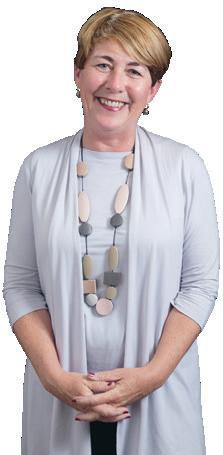
make some young cabernets too “grippy”, and dark fruit. That balance enables it to be a pleasant drink now, but it seems a wine that will only improve with bottle age. I enjoyed this wine.
The first shiraz was the 2022 Selkirk. The colour is deep red, the bouquet is of plum with a hint of vanilla and white pepper. The vanilla presaged the depth and added complexity that time on oak brought to this wine. The predominant flavour on taste is of blackberry. I reckon that it will be a very good wine after at least two more years in bottle.
The final wine of the late afternoon was the 2021 Old Adam Shiraz. No one at this stage laughed when I proposed that when Adam ate the fruit and fell from grace it was a case of cores and defect. This shiraz is one where, Ron explained, the winemaker chooses the best parcels of estate-grown shiraz. This wine again reflected a good balance between tannin and fruit with a coffee grind nose and rich fruit intensity on taste. This is one I’d put away for three to five years.
“Ageing is just another word for living.” –Cindy Joseph

By Joanne Madeline Moore
ARIES (Mar 21 – Apr 20)
Impatient Rams are keen to share information and exchange ideas with family, friends and work colleagues, but Saturn slows progress and Neptune confuses communication. And the week starts with a Lunar Eclipse that lights up your self-sabotage zone, so make sure your entertaining chatter doesn’t denigrate into gratuitous gossip. Friday and Saturday’s positive vibes are good for domestic activities, family get-togethers and revving up your daily routine..
TAURUS (Apr 21 – May 21)
With Saturn now back in your peer group zone (until February 14, 2026) you’re learning some valuable lessons about friendship and loyalty. And this week’s Lunar Eclipse shines a bright light on work that still needs to be done. It’s also a good time to write a wish list of your most cherished hopes and dreams for the future. You can’t hit a bullseye if you haven’t got one! Saturday favours creative projects, plus socialising with family members and close friends.
GEMINI (May 22 – June 21)
The week starts with a Lunar Eclipse activating your career zone, so do your best to complete old projects and promote new ones. Then, on Saturday, the Sun pairs up with your ruling planet, Mercury. So, get your creative juices flowing in imaginative new directions, focus your busy mind and sharpen your cerebral talents. It’s the perfect time to analyse, study, research and dig deep as you uncover a mystery or solve a perplexing problem (or two).
CANCER (June 22 – July 23)
With jolly Jupiter jumping through your sign (which only happens every 12 years) Crabs are raring to go! And the Lunar Eclipse activates your travel and education zones, so it’s time to make plans for a future trip or a new course of study. On Friday, do something special that makes your heart sing. Be inspired by writer Marian Keyes (who turns 62 on Wednesday): “When happiness makes a guest appearance in one’s life, it’s important to make the most of it.”.
LEO (July 24 – Aug 23)
It’s a big week for colourful Cats that starts with a Lunar Eclipse in your intimacy/ secrets/trust zone. And then Friday’s Sun/Jupiter link is terrific for initiating creative ideas, making financial progress and having plenty of fun. So, it’s time for lively Lions to seize the day and make ambitious plans as you sparkle and shine! Be inspired by birthday great, poet Mary Oliver: “Tell me, what is it you plan to do with your one wild and precious life?”
VIRGO (Aug 24 – Sept 23)
The week starts with a Lunar Eclipse in your relationship zone, so there’s a tendency to become obsessed with a person (or idea). You’re putting in 100% effort but don’t be disappointed if the results aren’t perfect – you’ll learn more from perceived ‘failures’ than you will from successes. Draw inspiration from Virgo film star Sophia Loren: “It’s better to explore and make mistakes than to play it safe. Mistakes are part of the dues one pays for a full life.”
LIBRA (Sept 24 – Oct 23)
It’s a good week to reimagine and restructure your day-to-day life, as Saturn and the Lunar Eclipse activate your work, wellbeing and daily routine zones. Perhaps you can make your diet more nutritious, your exercise program more regular or your work practises more streamlined. Then Saturday is the perfect day to put the worries of the world aside as you organise some concentrated ‘me time’ for meditation, contemplation and relaxation.
SCORPIO (Oct 24 – Nov 22)
The Sun and Mercury are visiting your peer group zone, while Saturn and the Lunar Eclipse stimulate your friendship zone. So, a close friend could frustrate you or an acquaintance could give you some confusing information. Avoid the temptation to sulk, stew and simmer. A double dose of Scorpio charm and diplomacy will get you through, with your reputation (and sanity) intact! Friday is fabulous for traveling and socialising with your peer group.
SAGITTARIUS (Nov 23 – Dec 21)
This week – as the Sun, Saturn and the Lunar Eclipse stir up your work and home zones – expect a domestic drama or a professional challenge. So do your best to be unusually diplomatic with a cranky colleague or a recalcitrant relative. Blunt honesty isn’t the best policy – communication will improve with some creative sugar-coating. A pinch of patience and a dollop of sensitivity (not your usual modus operandi) will help smart Sagittarians sail through.
CAPRICORN (Dec 22 – Jan 20)
Monday’s Lunar Eclipse energises your communication and education zones, so it’s a wonderful week to be a conversational student of life. And with courageous Mars charging through your career and life direction zones, it’s also time to grab opportunities with both hands and make some bold, brave moves. Your motto for the moment is from writer (and birthday great) D. H. Lawrence: “I want to live my life so that my nights are not full of regrets.”
AQUARIUS (Jan 21 – Feb 19)
Saturn, the Sun, Mercury and the Lunar Eclipse are all stirring up your finance zone, so impulse buys today could lead to cashflow problems tomorrow. Astute Aquarians will avoid making expensive purchases or major money moves, as you’re currently inclined to view your financial situation through decidedly rose-coloured glasses. Saturday’s 3 Sun/Mercury hook-up is good for sharing intimacies, researching a project or uncovering a secret.
PISCES (Feb 20 – Mar 20)
The week starts with a Lunar Eclipse in Pisces. However, if you daydream the week away then you’ll just end up feeling dazed and confused. Try channelling your creative energy into friendships, joint ventures and group projects. You’re keen to pursue a particular course of action but is a loved one on the same page? Take the time to double- check, otherwise you could find you are veering off in completely different directions. Clear communication is the key.
Copyright Joanne Madeline Moore 2025
Across
4 On which ship did a renowned mutiny take place (6)
7 What is a state of mental disorder (8)
8 Name a seaport in south-western Italy (6)
9 Which term describes the most wrathful (8)
11 When one rushes, one does what (7)
13 Which part of a spacecraft is detachable (7)
15 Which desert lies between the Nile valley and the Red Sea (7)
17 Name a small nocturnal carnivore (7)
20 To be glittering, is to be what (8)
23 When something lessens, it does what (6)
24 What is known as the Net (8)
25 When one engraves, one does what (6)
Sudoku hard No. 400
Down
Solution next edition
1 What, in Spanish America, is a day labourer (4)
2 What are fragments known as (6)
3 What is a swelling on the edge of the eyelid (4)
4 Name a principal linguistic family of Africa (5)
5 Name another term for a referee (6)
6 What is a subject of discourse (5)
9 What holds a vessel in place (6)
10 Which term describes a disturbance or a brawl (7)
12 Who is a transgressor (6)
14 Name a renowned whisky (6)
16 What do we call those who wound with the teeth (6)
18 Who is the head of a monastery (5)
19 What is a fertile place in a desert region (5)
21 Which term suggests many (4)
22 Name a Biblical garden (4)


Chartered accountant GAIL FREEMAN answers some frequently asked questions about superannuation.
• Question: Do the beneficiaries of my superannuation have to pay tax?
Answer: If you leave your super to your spouse, there is no tax to pay. However, if you leave your super to your children, grandchildren or others then tax is payable. It is usually at the rate of 15 per cent if left to the estate and paid in accordance with the terms of your will. If it is paid to beneficiaries directly tax is charged at 15 per cent + 2 per cent Medicare Levy. This contrasts with money outside super, which if left to any beneficiary is generally paid tax free.
• I am single and want to leave my superannuation to my sister. Can I name her in my binding nomination?
Under the legislation you can only nominate your spouse, your children, regardless of their ages, or a person with whom you are in an interdependency relationship to be a direct beneficiary of your superannuation. This group does not usually include siblings or parents. You can nominate your legal personal representative, which means that the trustees would then be likely to allocate the proceeds in accordance with the terms of your will. As this is a legal question you should get formal advice from your lawyer.
• I have accidentally contributed more than the $30,000 concessional cap. What happens now?
The ATO will send you a notice adding the excess to your personal income for the year and provide you with an excess concessional contributions tax offset of 15 per cent. You will then have the option of either withdrawing the excess or leaving the excess in your super fund. If your superannuation balance is below $500,000 at June 30 in the financial year prior you have unused concessional contribution amounts, the excess will first be applied against this unused balance and you may not be charged additional tax depending on the amount available.
• Why have I been charged Division 293 tax?
Division 293 tax is charged when the total of your taxable income and superannuation contributions exceeds $250,000. The tax at 47 per cent is charged on the excess above the threshold or on the taxable super contributions, whichever is less. Basically, it is charged to high-income earners. However, it is possible if you have an unusual event in the year that you can be charged Division 293 tax because you have slipped over that threshold. You will receive a Division 293 notification from the ATO.
• I have received a bonus of $50,000 which has pushed my income up significantly, will I have to pay excess contributions tax?
There is a cap on the earnings that your employer would use to calculate your superannuation guarantee. This amount is $62,500 per quarter in the current year. So if you earn more than $62,500, including your bonus, your employer will only have to pay super up to that limit.
If you have any queries about super or any tax-related matters contact the expert team at Gail Freeman & Co Pty Ltd on 6295 2844
Disclaimer
The information contained in this column is general in nature and does not take into account your personal objectives, financial situation or needs. Therefore, you should consider whether the information is appropriate to your circumstances before acting on it.
